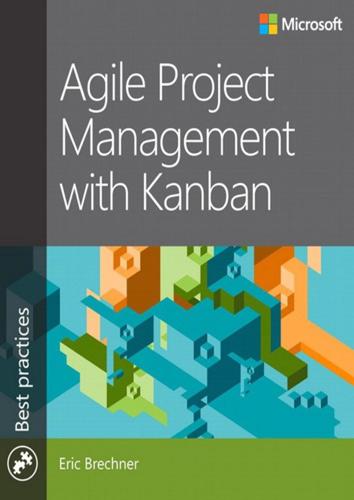
Agile Project Management With Kanban
by
Eric Brechner
Published 25 Feb 2015
This chapter provides an overview of further resources to expand your use and understanding of Kanban and to help you go beyond Kanban to improve your business and life. The topics covered are: Expanding Kanban to new areas of business and life Mixing Agile and Lean with Kanban Why Kanban works Improving beyond Kanban Checklist Expanding Kanban to new areas of business and life Can you use Kanban for everything you do? Kanban can be useful for a broad range of activities in your business and personal life. The primary requirement is that the work have a start and an end. You can use Kanban for teams as large as the room having your signboard will hold or just by yourself.
…
Further resources and beyond Previous chapters have introduced you to Kanban. You can plan and hit deadlines with Kanban. You can use Kanban to adapt from traditional Waterfall or evolve from Scrum. You can continuously integrate and push components, continuously publish apps and content, and continuously deploy services. You can even use Kanban within large projects and organizations and for sustained engineering. Once you’ve gotten a real sense of Kanban, a few questions may occur to you: Can I use Kanban for everything I do? What practices are and aren’t compatible with Kanban? Why does Kanban work so well? How can I improve beyond Kanban? This chapter provides an overview of further resources to expand your use and understanding of Kanban and to help you go beyond Kanban to improve your business and life.
…
—Vijay Garg, Senior Program Manager, Xbox Engineering Table of Contents Introduction Chapter 1 Getting management consent An open letter to your manager Problem Solution Risks Plan Moving forward Checklist Chapter 2 Kanban quick-start guide Step 1: Capture your team’s high-level routine Step 2: Redecorate your wall Step 3: Set limits on chaos Step 4: Define done Step 5: Run your daily standup Troubleshooting Checklist Chapter 3 Hitting deadlines Populate your backlog Establish your minimum viable product (MVP) Order work, including technical debt Estimate features and tasks Track expected completion date Right-size your team Basic approach Advanced approach Checklist Chapter 4 Adapting from Waterfall Introducing Kanban to a Waterfall team Working in feature teams Completing features before starting new ones Dealing with specs and bugs Specs Bugs Engaging with customers Celebrating performance improvements Rude Q & A Checklist Chapter 5 Evolving from Scrum Introducing Kanban to a Scrum Team Mapping the roles and terms Evolving the events Celebrating performance improvements Rude Q & A Checklist Chapter 6 Deploying components, apps, and services Continuous integration Continuous push Continuous publishing Continuous deployment Checklist Chapter 7 Using Kanban within large organizations Deriving a backlog from big upfront planning Ordering work based on dependencies Fitting into milestones Communicating status up and out Dealing with late or unstable dependencies Late dependencies Unstable dependencies Staying productive during stabilization Checklist Chapter 8 Sustained engineering Define terms, goals, and roles Consistent vocabulary Challenges and goals Define roles and responsibilities Determine SE ownership Lay out support tiers Tier 1 Tier 2 Tier 3 Collaborate for efficiency Triage Quick-solve meeting Implement Kanban SE workflow Escalations Bugs/Other Work Kanban tools Troubleshooting Checklist Chapter 9 Further resources and beyond Expanding Kanban to new areas of business and life Scaling Kanban up, down, and out Personal Kanban Mixing Agile and Lean with Kanban Why Kanban works Single-piece flow Theory of constraints (TOC) Drum-buffer-rope Improving beyond Kanban Critical chain Lean development Global optimization Checklist Index About the author Introduction Dedicated to Corey Ladas, who invited me to see through new eyes.
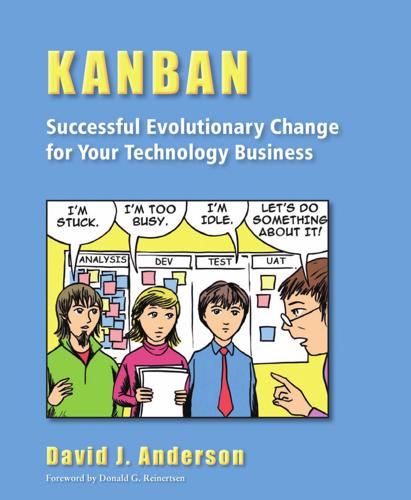
Kanban: Successful Evolutionary Change for Your Technology Business
by
David J. Anderson
Published 6 Apr 2010
Table of Contents Praise for Kanban Kanban Foreword Part One: Introduction Chapter 1: Solving an Agile Manager’s Dilemma My Search for Sustainable Pace My Search for Successful Change Management From Drum-Buffer-Rope to Kanban Emergence of the Kanban Method Kanban’s Community Adoption The Value of Kanban is Counter-Intuitive Takeaways Chapter 2: What Is the Kanban Method? What is a Kanban System? Kanban as a Complex Adaptive System for Lean Emergent Behavior with Kanban Kanban as a Permission Giver Takeaways Part Two: Benefits of Kanban Chapter 3: A Recipe for Success Implementing the Recipe Focus on Quality Reduce Work-in-Progress and Deliver Often WIP, Lead Time, and Defects Who’s better?
…
Card walls common in agile software development are not kanban systems. Kanban systems create a positive tension in the workplace that forces discussion of problems. The Kanban Method (or capital K “Kanban”) utilizes a kanban system as a catalyst of change. Kanban requires that process policies are defined explicitly. Kanban uses tools from various fields of knowledge to encourage analysis of problems and discovery of solutions. Kanban enables incremental process improvement through repeated discovery of issues affecting process performance. A contemporary definition of the Kanban Method can be found online at the Limited WIP Society community web site, http://www.limitedwipsociety.org/.
…
Takeaways The first kanban system was implemented with the XIT Sustained Engineering software maintenance team at Microsoft, starting in 2004. The first kanban system used an electronic tracking tool. The first kanban system was implemented with an offshore team at a CMMI Model Level 5 appraised vendor in Hyderabad, India. The workflow should be sketched and visualized. The process should be described as an explicit set of policies. Kanban enables incremental changes. Kanban enables change with reduced political risk. Kanban enables change with minimal resistance. Kanban will reveal opportunities for improvement that do not involve complex changes to engineering methods.
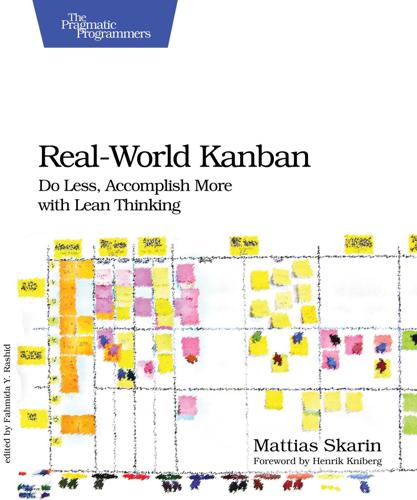
Real-World Kanban
by
Mattias Skarin
Published 23 Jun 2015
No items can be made or moved without a Kanban. 4. Defects are not passed on to the next stage. 5. The number of Kanbans is reduced carefully to lower inventories and to reveal problems. These Kanban rules tell you a lot about the intent behind Kanban cards as used in manufacturing. By understanding the behaviors they drive, we can learn how to apply Kanban wisely in a different setting, such as in product development. Now that we have a bit of historical perspective on how Kanban was originally used in manufacturing, turn the next page to see how the six core practices of Kanban apply to knowledge work: report erratum • discuss Chapter 1.
…
report erratum • discuss Index A3 cards, see also concepts improved content, 42 structure and organization, 100–104, 107 Acc. test column, 32, see also testing access rights, 50 accountability and trust, 84 active items, 58, 61, 68 Agile, see Lean anchor points, estimate, 75 Anderson, David J., xi architecture, simplifying, 108 assignments, rotating, 64, 90 authority for decision making, 38 Kanban boards, 33, 62– 63 standup meetings, 38 bottlenecks derailed project case, 73 Enterprise Kanban case, 46–52 spotting with workflow visualization, 6 Box, George E.P., 14 browsers and concepts, 104, 113 Build/Package column, 76 burger joint example, 4 burndown release, 73 sprints, 70, 72 burnout, 100, see also change management case study Burrows, Mike, xi B C DIGITS 5-Why technique, 80 A back office case study, 85–94 rotating assignments, 63, 90 Backo, 63 bad news first environment, 18 bank case study, 85–94 Basic features in Kano model, 109 bias, 10–11, 40 blockers improvement pulse, 41 cards, Kanban, 4–5 case studies, see also change management case study; derailed project case study; Enterprise Kanban case study about, ix–x back office case study, 85–94 cause and effect, separating, 59 Cauwenberghe, Pascal Van, 20 celebrations, 68 change avoiding surprises, 11, 49 blindness, 11 communication, 11–12, 49 countering resistance, 11–13, 25–26 evaluation, 13, 22 as experiment, 12 soliciting feedback before, 25–26 will to, 3 change blindness, 11 change management, Enterprise Kanban case, 47–50 change management case study, 57–68 challenges, 57–58, 64 continuous improvement, 64–66 Kanban boards, 59–66 metrics, 65–66 reactions, 67 standup meetings, 63, 67 changes, stopping late, 47–50 checklist, release, 50 clarification building trust, 14 common goal, 84 estimating and, 35, 75 experimentation, 21 modular design, 19 release expectations, 50 routines, 92 tradeoffs, 109 coffee break-driven improvements, 92 Index collaboration collaborative design, 29 helping other teams, 68 improve collaboratively core principle, 6 rotating assignments, 64, 90 software developers with back office, 92 collaborative design, 29 color, organizing Kanban boards with, 60, 62 commits and avoiding regression errors, 78 common goal, 84 common issues FAQ, 64 communication, see also clarification; trust avoiding surprises, 11, 49 blockers on Kanban boards, 33 concepts, 100 decisions, 18, 22 Enterprise Kanban case study, 24, 53 experimentation, 20 improvement initiatives, 55 of need for change, 12 priorities, 68 shared language, 26–27 soliciting feedback before change, 25–26 company demos, 39 Company F, see derailed project case study Company H, see change management case study; Enterprise Kanban case study complexity, estimating by, 75 concepts, 99–113 about, x, 29 advantages, 100, 104 Enterprise Kanban case study, 31–42 improvement in A3s, 42 Kanban boards, 31 layout, 108–113 mandatory sections, 108– 110 other sections, 110–113 ownership, ix, 29–30, 105 percentage of popular, 40 questions, 100, 106 standup meetings, 37 steps, 106–108 structure and organization, 100–104, 107–113 confidence level polls, 73 continuous feedback, 15–16, 38–40, 53 continuous flow, focus on, 27, 52, see also flow continuous improvement, see also improvement; measurement bank case study, 91–94 change management case study, 64–66 derailed project case study, 79–81 Enterprise Kanban case study, 38–42 experimentation, 9 finding opportunities for, 10–13 in Lean, 8–10 conversation, see communication coordination, explicit, 19, see also dependencies core practices, 5–7 costs concepts, 106 efficiency and reduction in, 8 estimating, 34–35 coupling dependencies, 19 creative height, 29 culture of curiosity, 6, 9–10, 20, 22, see also experimentation customer, see also value columns on Kanban boards, 32, 88 concepts, 100, 102–103 feedback, 32, 38, 52–53, 74 observation by developers, 92 perspective and Lean, 7 Customer usage column, 32 cutoff time, 47 cycle time, measuring with, 91 D data evaluating improvements, 48 focus on quality, 27 • 118 decision making authority, 38 avoiding pre-made solutions, 30 collaborative design, 30 decentralizing, 109 documented processes, 48 Enterprise case study, 34–36 fact-based, 10 long-term thinking, 84 modular design, 19 speed, 15, 18 defects, avoiding passing on, 5, 7 definitions definition of done, 38, 73, 83 derailed projects, 83 explicit process policies, 6 improvements, 9, 38, 73 Kanban boards, 94 demand concepts, 111 prioritizing tasks, 95 usefulness of Kanban boards, 93–94 demand type, measuring with, 91 demos, replacing sprint demo with company demo, 39 dependencies change management case study, 57–58, 62 Kanban boards, 62 modular design, 19 recognizing, 22 risk of late changes, 50 derailed project case study, 69–84 challenges, 69–71 continuous improvement, 79–81 Kanban boards, 71–77, 79 metrics, 83 design collaborative, 29 modular, 15, 19 Dev column, 32 developer exchange programs, 78 Development support column, 88 Index development testing, see testing discover phase, 30 distribution of skills, 64 documentation collaborative design, 30 decision making, 48 simplifying, 107 ticket system, 64 done, definition of, 38, 73, 83 E efficiency, optimizing for, 8, 22 effort estimating, 34, 41 vs. value, 34 electronic Kanban boards, 95 end-to-end flow, see also flow improving, ix, 10, 12, 22 visualizing with Kanban board, 25–28, 55 Enterprise Kanban case study, 23–54 challenges, 23–25 concept improvement, 42 continuous improvement, 38–42 decision making, 34–36 identifying bottlenecks, 46–52 Kanban board, 25–28, 31–42 lead time improvement, 50–54 metrics, 40–45 organizational structure, 24 perception of improvement, 53 standup meetings, 37–38 stopping late changes, 47–50 environment fit, 17 estimating clarification in, 34, 75 by complexity, 75 costs, 35 effort, 34, 41 T-shirt sizing scheme, 75 time to market, 43–45, 108 upfront estimates, 44 evaluation improvements, 13, 22, 48 Kanban boards, 62 retrospective meetings, 64, 68, 91 evolution of Kanban boards, 63 evolving experimentally core principle, 6 exchange programs, developer, 78 Exciters in Kano model, 109 experimentation boards, 20 concept development, 107 core principle, 6 improvement initiatives, 9–10, 12, 55 long-term thinking model, 13 owners, 21 as system enabler, 15, 20–22 explicit coordination, 19 explore phase, 30 F facilitators in collaborative design, 29 FAQ for common issues, 64 fast feedback enabler, 6, 15– 16, see also feedback features concepts, 103, 109 Kanban boards, 31, 36 prioritizing, 82 sprint times, 81, 83 Features concept section, 103 feedback before change, 25 columns on Kanban boards, 32 concepts, 112 continuous, 15–16, 38– 40, 53 customer, 32, 38, 52–53, 74 system enabler, 6, 15–16 testing, 47 thumb voting, 25 visualization, 39 fika-driven improvements, 92 finishing vs. starting, 6 fit columns on Kanban boards, 32 • 119 feedback loops, 17 validation, 53 Five-Why technique, 80 flexibility in long-term thinking model, 13 in technology, 14, 19 flow, see also information flow change management case study, 60 focus on continuous, 27, 52 improving end-to-end, ix, 10, 12, 22 managing as core practice, 6 measuring, 6, 65–66 modular design, 19 optimizing for efficiency, 8, 22 visualizing, 6, 25–28, 55 walking during standup meetings, 38, 63 frequency distribution and estimating upper control limits (UCL), 45 future work, 75 G goal, common, 84 granularity, shared language, 27 H Hammarberg, Marcus, xi helping other teams, 68 High pro column, 60 I impact concepts, 100–101, 108 mapping, 106 Impact concept section, 101, 108 impediments, see blockers improvement, see also continuous improvement; measurement; whole, improving the advice for, 54, 68, 84, 95 bank case study, 91–94 change management case study, 64–66 communicating need for, 12 defining, 9, 38, 73 Index derailed project case study, 79–81 end-to-end flow, ix, 10, 12, 22 Enterprise Kanban case study, 38–42, 50–54 evaluation of initiatives, 13, 22 experimentation, 9, 12, 55 fika-driven, 92 improve collaboratively core principle, 6 long-term thinking, 13– 22 observation based, 48, 54, 91 opportunities for, 10–13, 46–52, 68 pulse, 41 small improvements, 84 improvement Kanban board, 91 Improvement column, 60 improvement pulse, 41 incident managers, standup meetings, 67 information flow decision pace, 18 improving, 7 problem solving, 79 trust, 18 visualizations, 18, 41 initiative, encouraging, ix, 10, 20, 22 integration fit, 17 intuition, 15 inventory and Kanban, 4–5 Investigations column, 88 iPhone concept example, 101– 104 J Joakim Sunden, xi K Kanban, see also Kanban boards advantages, 5 core practices, 5–7 defined, 4–7 educating team, 87 resources, xi rules, 5, 7 Kanban (Anderson), xi Kanban and Scrum, xi Kanban boards, see also measurement active items, 58, 61, 68 bank case study, 87–90 blockers, 33, 62–63 change management case study, 59–66 demand and usefulness of, 93–94 derailed project case study, 71–77, 79 electronic, 95 Enterprise Kanban case study, 25–28, 31–42 evaluating, 62 evolution, 63 identifying bottlenecks, 46–52, 73 improved A3s, 42 improvement Kanban board, 91 improvement pulse, 41 information visualizations, 41 location, 27 organization, 31–32, 36, 59–63, 67–68, 74, 87, 89 parked items, 89 set up, 26 testing columns, 32, 73, 76 Kanban cards, 4–5 Kanban From the Inside, xi Kanban in Action, xi Kano model, 103, 109 Kniberg, Henrik, xi L language communicating changes, 49 shared, 26–27 late changes, stopping, 47–50 lead time change management case study, 65–66 Enterprise Kanban case study, 50–54 estimating costs, 34 finding opportunities for improvement, 11, 46– 52 Kanban boards, 32, 40 measuring with, 6, 32, 40, 65–66 • 120 leadership, in long-term thinking model, x, 3, 13, 22 Leading Lean Software Development, vii Lean Canvas, 106 defined, 7–10 Plan Do Check Act (PDCA), 10 resources, xi Lean Canvas, 106 Lean From the Trenches, xi Lean Software Development, xi learning separating from observation, 21 system enablers, 13, 15, 20 legacy challenges, 23, 57 Liker, Jeffrey, xi limiting work-in-progress (WIP), 6, 72, 89 Linear concept section, 103, 109 load patterns, 111 long-term thinking avoiding surprises, 11 decision making, 84 improvement, 13–22 model, x, 3, 13, 22 loops, feedback, see feedback M man hours, 34 mapping, 106 market fit, 17 Market Reason concept section, 111 Market Size concept section, 111 market, time to estimating, 108 measuring, 40, 43–45 mean and estimating upper control limits (UCL), 45 meaning, evaluating Kanban boards, 62 measurement bank case study, 91 change management case study, 65–66 customer feedback, 38, 52 Index cycle time, 91 demand type, 91 derailed project case study, 83 Enterprise Kanban case study, 40–45 flow, 6, 65–66 lead time, 6, 32, 40, 65– 66 throughput, 6, 65–66, 83, 91 time to market, 40, 43–45 uses, 40 metrics, see measurement Modig, Niclas, xi modular design, 15, 19 morale and rework, 74 N Next column, 32 non-IT uses, see back office nonfunctional requirements (NFRs), 104 O observations improvement basis, 48, 54, 91 problem solving from, 80 separating from learning, 21 office uses, see back office organizational flexibility in long-term thinking model, 13 Other column, 60 overtime, 81 overview, shared bank case study, 94 change management case study, 67 derailed project case study, 72 Kanban boards, 62 need for, 62 workflow visualization, 6 ownership A3 development, 42 collaborative design, 30 concept, ix, 8, 29–30, 105 experiments, 21 standup meetings, 37 support questions, 90 team agreements, 90 • 121 P Q Parked column, 88 parking area, 88–89 parts, focus on, 15 Patches column, 60 PDCA (Plan Do Check Act), 10 peak activity, 111 percentage of popular concepts, 40 Performance Load Profile concept section, 111 pivoting improvement experiments, 10 Plan Do Check Act (PDCA), 10 PO Test column, 74 polls, 73 Poppendieck, Mary, vii, xi Poppendieck, Tom, vii, xi pride, 66 The Principles of Product Development Flow, xi Prio 1 requests column, 88 Prio 2 requests column, 88 Prioritized queue column, 63 Problem column, 60 problem solving bad news first environment, 18 building trust, 14, 18 collaborative design, 30 decision pace, 18 evolving experimentally core principle, 6 information flow, 79 observation, 80 visualization, 84 problem/solution fit, 17 process policies decision making, 48 explicit, 6 vs. reality, 78 simplifying, 107 procrastination, 84 product fit, 17, 32, 53 Product idea column, 32 product idea success, 25 Production column, 32 production environment, access rights, 50 progress indicators, 72–73 quality avoiding passing on defects, 5, 7 focus on, 27, 68, 74, 81, 84 optimizing for, 8, 22 responsibility for, ix, 8, 100 workflow visualization, 6 questions, concept, 100, 106 R reading, further, see resources Ready for dev column, 32 Ready to use column, 32 recaps, standup meetings, 38 reflection, 20, 22 regression errors, 77 Reinertsen, Donald, xi releases burndown, 73 change management case study, 59 checklists, 50 fitting on Kanban boards, 61 schedules, 48, 52, 74 validating code commits, 78 Releases column, 60 request-fielding system, 90 requirement specifications, simplifying, 108 resentment, 84 resistance to change countering, 11–12, 25–26 long-term thinking, 3 soliciting feedback, 25–26 trust, 13 resources, Kanban and Lean, xi responsibility accountability and trust, 84 experimentation, 20 quality, ix, 8, 100 support questions, 90 visualizing, 58 retrospective meetings, 64, 68, 91 return on investment (ROI), 34–35, 108 reuse and modular design, 19 Index rework focus on parts, 16 minimizing, 52 morale and, 74 ripple effect, 19 risk concepts, 29 dependencies, 19 late changes, 48, 50 ROI (return on investment), 34–35, 108 root cause analysis, 79 rotating assignments, 63, 90 routines, 88, 92 Routines column, 88 rules, Kanban, 5 S scenario fit, 17 Scenarios concept section, What-If, 112 scientific method, see also experimentation; observations decision making, 10 evolving experimentally core principle, 6 improvement initiatives, 9 Scrum demos, 39 derailed project case study, 70, 72, 81–83 sprint burndown, 70, 72 shared language, 26–27 simplification, 107 Skarin, Mattias, xi Sketch concept section, 102, 112 skills, distribution of, 64 slicing and continuous feedback, 40 solution fit, 17 solutions, avoiding pre-decided, 30 specialists collaborative design, 29 standup meetings, 37 speed, 15, 17 sprints burndown, 70, 72 focus on continuous flow, 27 reintroducing, 28 replacing sprint demo with company demo, 39 timeframes, 81, 83 tracking progress, 72 Standard change column, 60 standards, creating, 10 standup meetings bank case study, 91 change management case study, 63, 67 decision making authority, 38 duration, 38 Enterprise case study, 37–38 parked items, 89 participants, 37, 67 starting vs. finishing, 6 state, visualization, 9, 18, 22 statistics, see measurement story mapping, 106 Support column, 88 support questions bank case study, 88, 90, 94 change management case study, 63 rotating assignments, 63, 90 Surprise concept section, 103 surprises, avoiding, 11, 49 sustaining improvement experiments, 10 syncing ticket system with Kanban board, 64 system administrators, standup meetings, 67 system enablers about, x decision speed, 15, 18 experimental culture, 15, 20–21 fast feedback, 15–16 improving the whole, 15 long-term thinking, 13, 22 modular design, 15, 19 table, 14 vicious cycles, 14 System test column, 32 system testing, 32, 48, 52 • 122 T T-shirt sizing scheme, 75 TDD (test-driven development), 76 team agreements, 90 technology, flexibility in, 14, 19 Test Design column, 76 test-driven development (TDD), 76 testing access rights, 50 automated, 47 avoiding regression errors, 78 change management case study, 59 columns on Kanban boards, 32, 76 derailed project case study, 73, 76 feedback, 47 on Kanban boards, 73 progress indicators, 73 stopping late changes, 47, 50 system, 48, 52 test-driven development (TDD), 76 thinking, see initiative; longterm thinking This Is Lean, xi throughput measuring with, 6, 65– 66, 83, 91 per release, 65 per worktype, 65 thumb voting, 25, 59 ticket system change management case study, 58, 60, 62–64, 66 derailed project case study, 81 documentation from, 64 Kanban boards, 62–64 time change management case study, 59 cutoff time, 47 derailed project case study, 75 to feedback, 17 measuring cycle time, 91 replacing time reporting with visualizations, 41 Index sprints, 81, 83 stress and, 75 system testing, 52 time to market estimating, 108 measuring, 40, 43–45 timing Kanban rules, 5 system enablers, 15 Toyota, 4 The Toyota Way, xi tradeoffs concepts, 100, 109–110 decision pace, 18 transcribing and collaborative design, 30 transparency, 22, 62 trust, see also derailed project case study accountability, 84 among team members, 94 avoiding surprises, 11 clarification, 11, 14 communicating decisions, 18, 22 continuous improvement, 8, 13 defects, 7 flexibility in organization, 13 information flow, 18 stand for quality, 74 trying concepts, 107 U UCL (upper control limits), 43, 45 upfront estimates, 44 upper control limits (UCL), 43, 45 usefulness, evaluating Kanban boards, 62 user groups, concepts, 110 V validation code commits and releases, 78 continuous feedback, 40 Kanban boards, 32 minimizing rework, 52 product fit, 53 quality, 74 value concepts, 100, 102–103 customer feedback, 52– 53 vs. effort, 34 estimating, 35 finding opportunities for improvement, 11 measuring, 40 optimizing for, 8, 22 visualizing value stream, 55 value-adding time concepts, 100 Enterprise Kanban case study, 51–52 value-stream map finding opportunities for improvement, 11 rework, 16 velocity, see throughput vicious cycles, 14 visualization customer feedback, 39 evaluating, 62 flow, 6, 25–28, 55 identifying patterns and problems, 67, 84 • 123 improvement Kanban board, 91 information, 18, 41 limiting number of elements, 61 progress, 72–73 ticket system, 58 upper control limits (UCL), 45 value stream, 55 value-stream map, 11, 16 vocabulary, shared language, 27 W waiting time Enterprise Kanban case study, 51–52 estimates and, 45 testing, 48, 52 walking the flow, 38, 63 weather services case study, see Enterprise Kanban case study What-If Scenarios concept section, 112 whole, improving the building trust, 14 finding improvement opportunities, 12 overview, ix principle, 10, 15, 22 will to change, 3, 18 won’t do requests, 63 work-in-progress (WIP), limiting, 6, 72, 89 workflow, see flow wow factor, 103, 109 Be Agile Don’t just “do” agile; you want to be agile.
…
report erratum • discuss What Is Kanban? •5 It’s dead simple. It’s so simple that no one needs to think about the process. It’s a natural part of work. It’s easy to see at a glance if you need to keep up or slow down. During times of stress, there’s less risk of misunderstandings and errors. Another advantage is flexibility. A production line with Kanbans is simple to change. Any change can be made locally. Just reassemble the stations, change the number of Kanbans, and you are done. The Kanban Rules The Kanban rules (as applied in manufacturing) are in fact much more interesting than the Kanban cards: 1. A later process tells an earlier process when new items are required. 2.
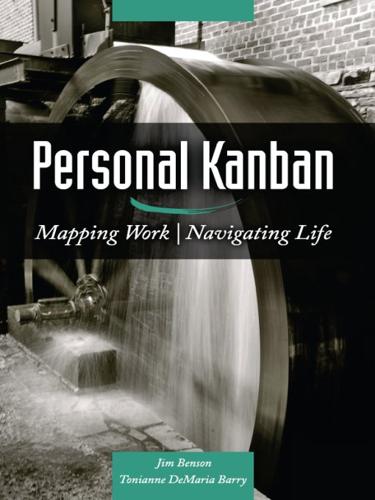
Personal Kanban: Mapping Work, Navigating Life
by
Jim Benson
and
Tonianne Demaria Barry
Published 2 Feb 2011
So we continued to blog, microblog (Tweet), and engage in conversation to test our assumptions with the emerging global Personal Kanban community of practice. This led to a series of Personal Kanban-related consulting engagements and then to the dedicated Personal Kanban website personalkanban.com. We hope to continue the conversation, and welcome you to connect with us and other Personal Kanban practitioners. FACEBOOK Join us on Facebook to meet and engage with other Personal Kanban practitioners. Share your ideas, ask questions, post your Personal Kanban photos, discuss your Personal Kanban experiences. Keep apprised of the latest Personal Kanban-related blog posts, podcasts, presentations, webinars, and engagements.
…
TABLE OF CONTENTS TITLE PAGE COPYRIGHT PAGE FOREWORD The Agony of Crisis Management INTRODUCTION Personal Kanban: 100% New Age Free CHAPTER 1 The Basics of Personal Kanban Towards a More Personal Kanban Rules for a System That Abhors Rules Why Visualize Your Work: Navigate Safely Why Limit Your WIP Why Call it Personal Kanban How to Use This Book PKFlow Tips CHAPTER 2 Building Your First Personal Kanban Step One: Get Your Stuff Ready Step Two: Establish Your Value Stream Step Three: Establish Your Backlog Step Four: Establish Your WIP Limit Step Five: Begin to Pull Step Six: Reflect Personal Kanban Power Boosters What it All Means PKFlow Tips CHAPTER 3 My Time Management is in League with the Freeway Flow Like Traffic Setting WIP Limits Living the Days of Our Lives Clarity Calms Carl To-do Lists: Spawns of the Devil PKFlow Tips CHAPTER 4 Nature Flows Flow: Work’s Natural Movement Cadence: Work’s Beat Slack: Avoiding Too Many Notes Pull, Flow, Cadence, and Slack in Action Busboy Wisdom: The Nature of Pull PKFlow Tips CHAPTER 5 Components of a Quality Life Metacognition: A Cure for the Common Wisdom Productivity, Efficiency, and Effectiveness Defining a Good Investment Reality Check PKFlow Tips CHAPTER 6 Finding Our Priorities Structure, Clarity, and Our Ability to Prioritize Smaller, Faster, Better: Controlling Task Size and Limiting WIP Prioritization in Theory and Practice Urgency & Importance Live Your Own Life Expert: Metrics in Personal Kanban PKFlow Tips CHAPTER 7 Strive for Improvement Clarity Conquers All Course Corrections: The Reality of Reprioritization The Bedrock of Introspection Retrospectives Solving Problems at Their Source PKFlow Tips ENDGAME Endgame APPENDIX A Personal Kanban Design Patterns Jessica’s Story: Future in Progress and Multiple Value Streams Sequestering Approach: Dealing with Repetitive Tasks Emergency Response Approach: Taming Unexpected Workloads Time Capsule Approach Balanced Throughput Approach APPENDIX B Personal Kanban and Social Media Facebook Twitter Blogging FOREWORD THE AGONY OF CRISIS MANAGEMENT As an avid reader of business literature and a recovering human capital practitioner, most recently as Deputy, Human Resources at the Central Intelligence Agency, (retired), I’ve found Personal Kanban: Mapping Work | Navigating Life both insightful and timely.
…
BLOGGING A quick Google search demonstrates the level of Personal Kanban engagement on the Web. Around the world, practitioners are blogging about their innovations and experiences using Personal Kanban, from managing home renovations, to prepping for a holiday gathering, to tracking children’s chores or confidence levels. These types of blog posts have greatly enlivened the Personal Kanban discussion on Facebook and Twitter. We welcome you to share your stories directly with the Personal Kanban community. Be sure to share a link to your Personal Kanban-related blog posts on Twitter (remember to add #PKFlow to your tweets) or on the Personal Kanban Facebook page.

Kanban in Action
by
Marcus Hammarberg
and
Joakim Sunden
Published 17 Mar 2014
No new processes, no new roles, and no troublesome reorganizations needed. Kanban, kanban, or kanban systems? If you read the text closely, you might spot that we’re spelling kanban with a lowercase k in this book. The kanban community is continuously improving and evolving, so things change a lot. We have interpreted the current knowledge as follows: The Kanban method (capital K)—A method to create evolutionary change in your organization, first formulated by David J. Anderson and documented in his book Kanban: Successful Evolutionary Change for Your Technology Business (Blue Hole Press, 2010, http://amzn.com/B008H1APT0). Kanban (sometimes lowercase k, sometimes capital K)—Sometimes refers to a “visual process management system that tells what to produce, when to produce it, and how much to produce” (last time we checked Wikipedia anyway), sometimes to the actual visual signal.
…
Use metrics to improve—not to punish. Chapter 12. Kanban pitfalls This chapter covers How to avoid common kanban pitfalls and criticism The number-one mistake when starting to use kanban The fact that kanban isn’t a process at all, at least not as you might think By now you should have plenty of reasons to use kanban in your process. You can show interested people that kanban has improved and continues to improve your process. Because of the approach that kanban takes to change management (“Start where you are and improve from there”), most teams and organizations don’t object too loudly to kanban and the principles it’s built on.
…
Judging from all the questions we receive about kanban, and from all the light bulbs that get turned on during our practically oriented talks and training courses for people who have been working with kanban for some time, as well as for novices, you’ll get a lot out of this book even if you’re far from new to kanban. Let’s get started and see some kanban in action! The structure of this book This book is divided into four parts, each with a different purpose, aimed at being your companion as you learn kanban: Part 1, “Learning kanban”—This is an introduction to kanban in the form of a short story. The idea is that you can quickly skim through this part to get a feeling for what kanban is and learn enough about it to get you up and running, just like the fictional team you’ll meet in chapter 1.
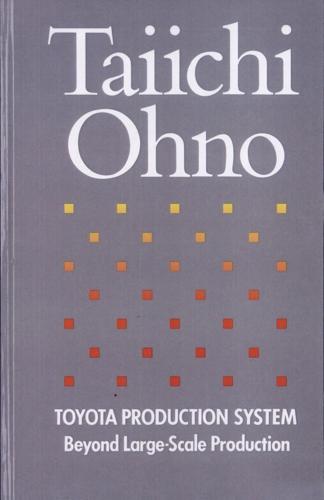
Toyota Production System: Beyond Large-Scale Production
by
Taiichi Ohno
and
Norman Bodek
Published 1 Jan 1978
As market demands grow more diverse, we must put even more emphasis on this point. ► Kanban Accelerates Improvements Under its first and second rules, kanban serves as a withdrawal order, an order for conveyance or delivery, and as a work order. Rule three ofkanban prohibits picking up or producing goods without a kanban. Rule four requires a kanban to be attached to the goods. Rule five requires 100 percent defect-free products (that is, do not send anything defective to the subsequent process). Rule six urges us to reduce the number of kanban. When these rules are faithfully practiced, the role of kanban expands. A kanban always moves with the needed goods and so becomes a work order for each process.
…
It is said that improvement is eternal and infinite. It should be the duty of those working with kanban to keep improving it with creativity and resourcefulness without allowing it to become fixed at any stage. ► Carrying Carts as Kanban I have described the kanban as the piece of paper contained in a rectangular vinyl envelope. An important role of kanban is to provide the information that connects the earlier and later processes at every level. A kanban always accompanies the goods and thus is the essential communications tool for just-in-time production. In the following case, the kanban functions even more effectively when combined with carrying carts.
…
In reality, however, it is a big problem because extra indirect workers may be kept idle. This is yet another challenge to Toyota's kanban system. Kanban must work effectively to maintain just-in-time in the plant. And for kanban to be effective, stabilization and production leveling are indispensable conditions. Some people think, however, that kanban can be used only to manage parts processed in daily stable quantities - but this is a mistake. Others think kanban cannot be used without a steady withdrawal of parts. This is also wrong thinking. Kanban was introduced to manage the balance weight problem, one of the most difficult processes in automobile production.
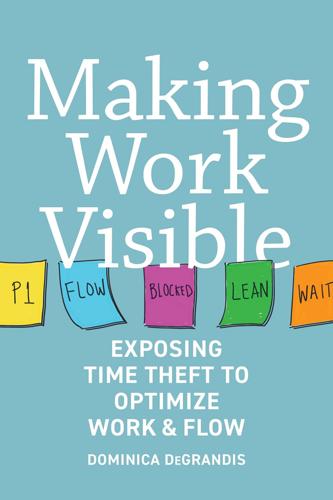
Making Work Visible: Exposing Time Theft to Optimize Workflow
by
Dominica Degrandis
and
Tonianne Demaria
Published 14 May 2017
In doing so, we will be focusing on the system that efficiently and effectively addresses and manages the core issues caused by the five thieves by making work visible and smoothing out workflow: Lean kanban flow. As stated in the introduction, the rest of this book is simultaneously an explanation, a how-to guide, and a business justification for seeing work flow fast by using Lean, kanban, and flow methods. Section 2.1 is for readers who want a lesson on how to get started with using kanban and for those who want a review on kanban basics. If your kanban basics are solid, then skip to Section 2.2 where we dive into how to expose time thieves and optimize your workflow using a Lean kanban flow approach. All the examples may not apply to your specific situation.
…
This is why we need a pull system—in which people can focus on one thing long enough to finish it before starting something new—like kanban. Kanban is a visual pull system based on constraints that allow workers to pull work when they have availability instead of work being pushed onto them regardless of their current workload. Since demand and capacity are frequently unbalanced, and it’s almost impossible to get everything done on time, systems like kanban are for helping people balance all their work demand. We’ll get into kanban and where it fits into the process of making work visible a bit later, but for now, know that kanban is an approach to make work and problems visible and improve workflow efficiency.
…
However, it’s not productive to say yes all the time, nor is it sustainable to consistently work evenings and weekends. The power of kanban gives you the freedom to finish work. Kanban is Japanese for signal card—a card that, very simply, signals your availability to do some work. When you pull a card from the backlog onto the in-progress area of your kanban board, you commit to being available to do the work that the card represents. Figure 2. Prep Implement Feedback Board The number of cards under the in-progress area reveals the amount of WIP on the kanban board. The board in Figure 2 shows a WIP of four. WIP limits are what make kanban a pull system. When a card is finished, it signals available capacity and causes another card to be pulled into In Progress.

Scala in Action
by
Nilanjan Raychaudhuri
Published 27 Mar 2012
Get yourself a nice coffee and a sandwich before diving in to build your first web application in Scala. 6.1. Building weKanban: a simple web-based Kanban board You’re going to build a simple web-based Kanban[1] board. The word Kanban is derived from the Japanese language and it means “card-signal.” In Kanban, the card-signaling is used to trigger action for new work. This mechanism is also known as a pull system because new work is pulled in only when there’s available capacity to handle the work. 1 “Kanban,” http://en.wikipedia.org/wiki/Kanban. The essential idea behind the Kanban system is limiting the work in progress.[2] Stop starting and start finishing is an important mantra aimed at reducing the amount of work in progress and, ultimately, waste.
…
Here using the scala.Either type allows you to easily handle the error condition. You’re done adding new stories to the Kanban board. Next you’ll build the Kanban board where all the stories will be displayed. 7.2. Building the Kanban board page Now the focus will move to building the Kanban board. Your next user story: As a developer I want to move cards (stories) from one phase to another so that I can signal progress. Figure 6.1 shows the prototype of the Kanban board you’re supposed to build. To implement this story, you have to provide an ability to move cards from one phase to another. For example, a user of your Kanban board should be able to move a card from ready phase to development phase and vice versa.
…
This method returns a list of scala.xml.NodeSeq objects that you can easily insert into the body of HTML you’re going to generate for the Kanban board. To tie all these pieces together, add the apply method to the KanbanBoard view object, which will create the Kanban board view, shown in the following listing. Listing 7.10. Kanban board view The KanbanBoard view object is used to render the Kanban board in figure 7.4. Like the CreateStory view object, the apply method is responsible for rendering the Kanban board. The apply method calls the header method to add all the JavaScript files you need to add drag-and-drop functionality to your Kanban board. The contents of the header method get inserted in between the HTML head tags.
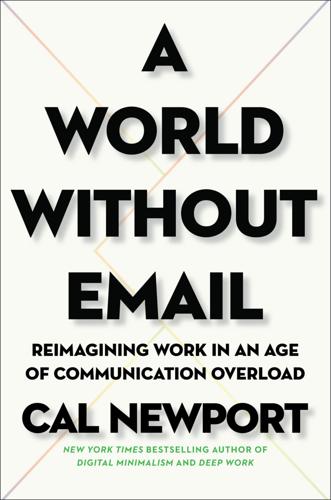
A World Without Email: Reimagining Work in an Age of Communication Overload
by
Cal Newport
Published 2 Mar 2021
Task Board Practice #2: When in Doubt, Start with Kanban’s Default Columns Once you leave the comfort of the entrenched guidelines surrounding the use of task boards in software development, it’s not necessarily obvious how to set them up for your specific knowledge work context. When in doubt, start with the default setup from the Kanban methodology, which includes just three columns: to do, doing, and done. You can then elaborate this foundation as needed. On Devesh’s boards, for example, he had a column for design tasks and a column for implementing client campaigns. This modification to the Kanban defaults proved useful in the context of his marketing firm because design and implementation work pull from two different pools of employees.
…
Kent Beck et al., “Manifesto for Agile Software Development,” 2001, agilemanifesto.org. 5. Modus Cooperandi website, https://moduscooperandi.com, accessed September 22, 2020. 6. Thrive, the official blog of Personal Kanban, http://personalkanban.com/pk/. 7. Alexie Zheglov and Gerry Kirk, “Lean Coffee or an Introduction to Personal Kanban,” Agile Tour Toronto 2012 session, YouTube video, 1:40, https://youtu.be/aOrfRhcD6ms. 8. Bradley Miller, “Personal Kanban Scheduling Board,” March 4, 2018, YouTube video, 7:46, https://youtu.be/tTdbcoTlljQ. 9. I long ago realized that trying to generate complex numerical grades for my problem sets—e.g., scoring a problem on a scale of 1 to 15—wasn’t worth the effort, and made it very hard to grade consistently.
…
Agile by itself is not an organizational system; it instead defines a general approach that is realized by multiple different specific systems. Two of the more popular systems at the moment are Scrum and Kanban, which, if you have any involvement with software, are terms you’ve at the very least heard mentioned. Generally speaking, Scrum breaks work down into sprints, where a team dedicates itself completely to delivering a particular update before moving on to the next. Kanban, by contrast, emphasizes a more continuous flow of tasks through a fixed set of phases, with a general goal of minimizing the current works in progress at any one phase, preventing bottlenecks.
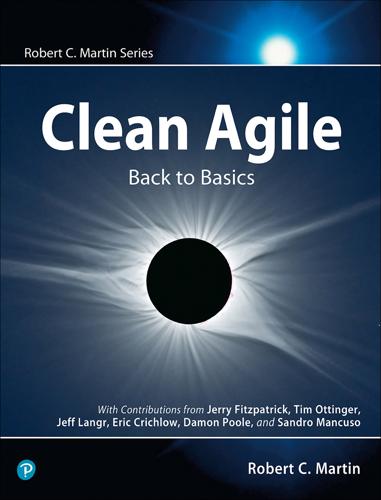
Clean Agile: Back to Basics
by
Robert C. Martin
Published 13 Oct 2019
This is just a high-level description of these practices for reference. There are many more Agile practices out there—consider this a starting place. For instance, rather than adopting Scrum, Kanban, XP, or one of the scaling frameworks, consider which single practice from the list below is most relevant to a current need for a defined group or team, and adopt that. Try it for a while, then repeat. The practices of Kanban—Kanban practices include making the work visible (via a card wall), limiting work in progress, and pulling work through the system. The practices of Scrum and XP—These two methodologies are grouped together because they are very similar apart from the technical practices in XP.
…
One method for this is to run regular open-space events. Portfolio Kanban—Traditional portfolio management practices tend to allocate people to multiple teams, which leads to rampant multitasking. Multitasking creates friction, increases complexity, and reduces throughput. Portfolio Kanban sets work in progress limits at the initiative level in order to ensure that the organization is focused on the highest-value work at all times. Having fewer projects in progress at a time also vastly simplifies (or even eliminates) multiteam coordination. Portfolio Kanban works best when paired with Minimum Viable Increments.
…
An open space (aka unconference) is a way to ask a powerful question of a large group of people, even a whole organization. If you have taken formal training on Agile or an Agile methodology, you likely played a number of games that illustrated Agile concepts. Games such as the penny game, Scrum simulations, Kanban Pizza, or LEGO city building. These games give participants an experiential connection to the power of self-organization, small batch sizes, cross-functional teams, TDD, Scrum, and Kanban. When the games are run with the intent of raising participants’ awareness and then letting participants decide what to do next, they capture the spirit of professional coaching. There is a growing body of coaching tools.
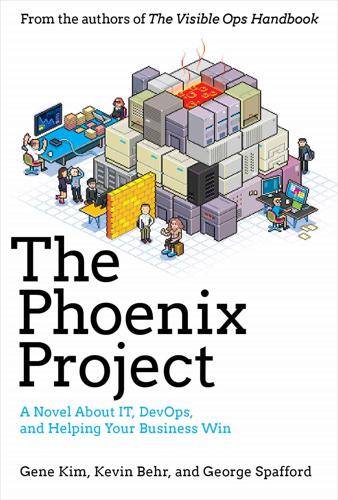
The Phoenix Project: A Novel About IT, DevOps, and Helping Your Business Win
by
Gene Kim
,
Kevin Behr
and
George Spafford
Published 14 Jul 2013
Patty breaks out into a grin and says, “It’s a kanban board. After our last meeting, I went to MRP-8 myself. I was so curious about this work center notion that I had to see it in action. I managed to find one of the supervisors that I’ve worked with before, and he spent an hour with me showing how they managed the flow of work.” Patty explains that a kanban board, among many other things, is one of the primary ways our manufacturing plants schedule and pull work through the system. It makes demand and WIP visible, and is used to signal upstream and downstream stations. “I’m experimenting with putting kanbans around our key resources.
…
“I’m experimenting with putting kanbans around our key resources. Any activities they work on must go through the kanban. Not by e-mail, instant message, telephone, or whatever. “If it’s not on the kanban board, it won’t get done,” she says. “And more importantly, if it is on the kanban board, it will get done quickly. You’d be amazed at how fast work is getting completed, because we’re limiting the work in process. Based on our experiments so far, I think we’re going to be able to predict lead times for work and get faster throughput than ever.” That Patty is now sounding a bit like Erik is both unsettling and exciting. “What I’ve done,” she continues, “is take some of our most frequent service requests, documented exactly what the steps are and what resources can execute them, and timed how long each operation takes.
…
Later at Alex’s plant, he started to release all work in accordance to the rate it could be consumed by the heat treat ovens, which was his plant’s bottleneck. That was his real-life Herbie. “Fully two decades after The Goal was published,” he continues, “David J. Anderson developed techniques of using a kanban board to release work and control WIP for Development and IT Operations. You may find that of interest. You and Penelope are close with your change board to a kanban board that can manage flow. “So, here’s your homework,” he says. “Figure out how to set the tempo of work according to Brent. Once you make the appropriate mapping of IT Operations to work on the plant floor, it will be obvious.
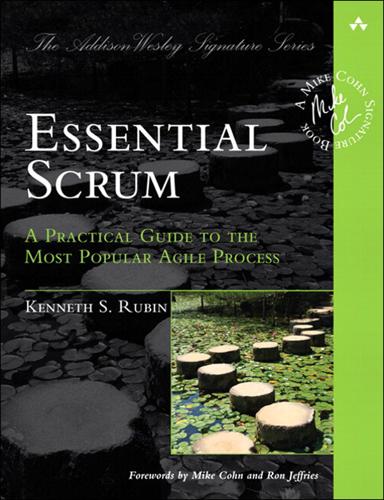
Essential Scrum: A Practical Guide to the Most Popular Agile Process
by
Kenneth S. Rubin
Published 19 Jul 2012
In interrupt-driven environments you would be better off considering an alternative agile approach called Kanban. Kanban is not a stand-alone process solution, but instead an approach that is overlaid on an existing process. In particular, Kanban advocates that you • Visualize how the work flows through the system (for example, the steps that the support organization takes to resolve a support request) • Limit the work in process (WIP) at each step to ensure that you are not doing more work than you have the capacity to do • Measure and optimize the flow of the work through the system to make continuous improvements The sweet spots for Kanban are the software maintenance and support areas.
…
In particular, Kanban advocates that you • Visualize how the work flows through the system (for example, the steps that the support organization takes to resolve a support request) • Limit the work in process (WIP) at each step to ensure that you are not doing more work than you have the capacity to do • Measure and optimize the flow of the work through the system to make continuous improvements The sweet spots for Kanban are the software maintenance and support areas. Some Kanban practitioners point out that Kanban’s focus on eliminating overburden (by aligning WIP with capacity) and reducing variability in flow while encouraging an evolutionary approach to change makes it appropriate to use in complex domains as well. Scrum and Kanban are both agile approaches to development, and each has strengths and weaknesses that should be considered once you make sense of the domain in which you are operating. In some organizations both Scrum and Kanban can be used to address the different system needs that coexist. For example, Scrum can be used for new-product development and Kanban for interrupt-driven support and maintenance.
…
For example, Scrum can be used for new-product development and Kanban for interrupt-driven support and maintenance. Closing Scrum is not a silver bullet or a magic cure. Scrum can, however, enable you to embrace the changes that accompany all complex product development efforts. And it can, and has, worked for Genomica and many other companies that decided to employ an approach to software development that better matched their circumstances. Although the Scrum framework is simple, it would be a mistake to assume that Scrum is easy and painless to apply. Scrum doesn’t prescriptively answer your process questions; instead, it empowers teams to ask and answer their own great questions.
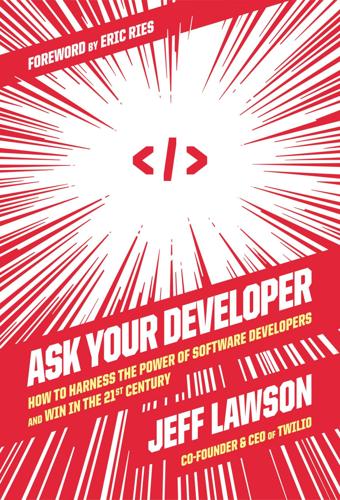
Ask Your Developer: How to Harness the Power of Software Developers and Win in the 21st Century
by
Jeff Lawson
Published 12 Jan 2021
In an attempt to bring discipline and predictability to software development, early practitioners of Agile looked to the world of manufacturing, asking: “How can we bring assembly line predictability to software development?” Thus was born the Kanban workflow methodology, which was literally taken from the Toyota Production System. In Kanban, the Product Owner breaks the week’s work down into small tasks, which get written on sticky notes and hung on a Kanban board. Engineers pull tasks from the board, do the work, move the notes to the “finished” pile, and repeat. When the week ends, they report the number of tasks they’ve finished. Breaking complex problems into smaller tasks is necessary, but the Kanban method risks treating developers like assembly line workers. You can imagine if you’ve read this far, I’m not a fan of that way of thinking.
…
As he puts it, “This is an organizational design problem in a lot of ways. The typical thing is for companies to say, ‘Okay, we have a business unit here, and then we have an engineering team in the company here, and they have an interface.’” The “interface” he’s skeptical of refers to Product Requirements Documents (PRDs), Kanban tasks, or other systems of throwing work over the wall. In fact, it often tends to create an adversarial relationship because the software people write their schedule and do their work, but then—as always happens—the requirements change. That’s when the accusations start flying. In Patio11’s words, “The folks who have been working on the software say, ‘You’re changing the rules of the game on me, I’ve got to throw out work.
…
It’s likely that your company practices some sort of Agile, but there is no single definition of Agile. Many practices have emerged, all under the umbrella of Agile, that constitute a spectrum of improved software development practices. You might have heard of some of the more popular ones, like Scrum, Kanban, or Extreme Programming (XP). And even within these practices, there are a wide variety of sects, and various degrees of adherence to the “rules.” Over the past twenty years, Agile Software Development has swept the world. In a 2019 “State of Agile” survey, 97 percent of respondents said their development organizations practice Agile methods.
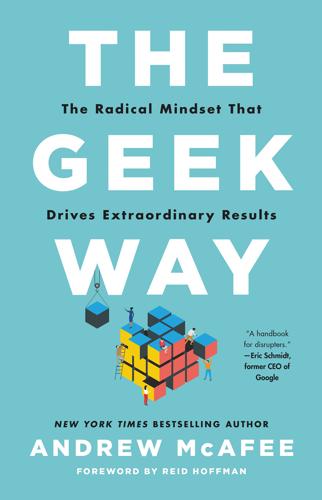
The Geek Way: The Radical Mindset That Drives Extraordinary Results
by
Andrew McAfee
Published 14 Nov 2023
A Quantitative Analysis of Agile Project Success,” International Journal of Project Management, vol. 33, no. 5 ( July 2015), 1040–51, https://doi.org/10.1016/j.ijproman.2015.01.006. 38 “even badly done, Agile outperforms”: Nyce, “The Winter Getaway.” 39 Standish Group: Anthony Mersino, “Why Agile Is Better Than Waterfall (Based on Standish Group Chaos Report 2020),” November 1, 2021, https://vitalitychicago.com/blog/agile-projects-are-more-successful-traditional-projects/. 40 “Kanban only has two rules”: Alex Rehkopf, “What Is a Kanban Board?,” Atlassian, accessed February 15, 2023, www.atlassian.com/agile/kanban/boards. 41 delayed the planned introduction: Simon Hage, “VW-Aufsichtsrat Fürchtet Folgen des Softwarechaos im Wettbewerb mit Tesla,” Der Spiegel, May 20, 2022, www.spiegel.de/wirtschaft/unternehmen/vw-aufsichtsrat-fuerchtet-folgen-des-softwarechaos-im-wettbewerb-mit-tesla-a-d28a2c76-6acf-436a-800a-f636cbe76b84. 42 Porsche and Audi models: Stefan Nicola, “Porsches Postponed by Buggy Software Cost VW’s CEO Herbert Diess His Job,” Bloomberg, July 25, 2022, www.bloomberg.com/news/articles/2022-07-25/porsches-postponed-by-buggy-software-cost-vw-s-ceo-his-job?
…
To allow everyone to see if they’re living up to the principle of delivering working software frequently, agile projects often feature visible displays of progress like kanban boards. These are typically whiteboards with cards posted on them. Each card represents a unit of work on the project, often called a “story.” The board is divided into columns showing stages of progress such as To Do, In Progress, Testing, and Done. As each story progresses, its card moves from column to column. Agile coach Max Rehkopf says, “Kanban only has two rules: Limit work in progress and visualize your work.” Visualization is critical because it provides constant observability: the progress of everyone’s work becomes obvious to everyone when all story cards are visible on a kanban board.
…
Visualization is critical because it provides constant observability: the progress of everyone’s work becomes obvious to everyone when all story cards are visible on a kanban board. Rehkopf’s other rule, to limit work in progress, also relies on the observability provided by the board. If work in progress is piling up—if, for example, there are lots of cards being added to the Testing column but not very many leaving that column—the problem soon becomes clear to everyone. The nasty surprises that characterize the 90 percent syndrome become much less likely, and the kanban board indicates when and where the teams need to take action to get the project back on track. When it matters most, though, teams don’t get to move their own story cards.
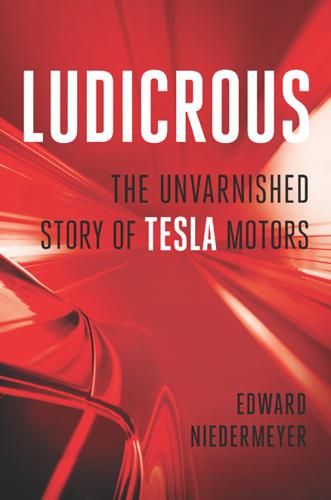
Ludicrous: The Unvarnished Story of Tesla Motors
by
Edward Niedermeyer
Published 14 Sep 2019
Road and Track, June 10, 2015. https://www.roadandtrack.com/new-cars/car-technology/news/a25872/elon-musk-tesla-battery-swap/ 117In 2013, California revised its Zero Emissions Vehicle credit system: Edward Niedermeyer. “Tesla Battery Swap: CARB’s Bridge to Nowhere.” Daily Kanban, June 23, 2015. https://dailykanban.com/2015/06/tesla-battery-swap-carbs-bridge-to-nowhere/ 117By demonstrating battery swap on just one vehicle: Ibid. 118As it turned out, the California Air Resources Board staff: Edward Niedermeyer. “Tesla Battery Swap: CARB’s Bridge to Nowhere.” Daily Kanban, June 23, 2015. https://dailykanban.com/2015/06/tesla-battery-swap-carbs-bridge-to-nowhere/ 118the company earned some $217 million from ZEV credits in 2014: John Lippert.
…
Tesla.com, June 21, 2013. https://www.tesla.com/videos/battery-swap-event 115a company blog post announced that the first Tesla swap station: The Tesla Team. “Battery Swap Pilot Program.” Tesla.com, December 19, 2014. https://www.tesla.com/blog/battery-swap-pilot-program 115By Memorial Day weekend, there was only one report: Edward Niedermeyer. “Tesla Battery Swap Unused Over Busy Holiday Weekend.” Daily Kanban, May 27, 2015. https://dailykanban.com/2015/05/tesla-battery-swap-unused-over-busy-holiday-weekend/ 116suddenly forum reports flooded in of Tesla owners receiving invitations: Tesla Motors Club. “Tesla Battery Swap Program Invite – Pros and Cons?” Teslamotorsclub.com, April 18, 2015. https://teslamotorsclub.com/tmc/threadstesla-battery-swap-program-invite-pros-and-cons.46083/ 116At the 2015 Tesla shareholder meeting in mid-June: Bob Sorokanich.
…
“Who Owns Your Vehicle’s Crash Data?” The Truth About Cars, June 30, 2016. https://www.thetruthaboutcars.com/2016/06/owns-vehicles-crash-data/ 129finally released a data-reading tool: Tesla. Tesla.com. https://edr.tesla.com/ 129in the wake of a lawsuit: Edward Niedermeyer. “Tesla’s EDR About-Face Raises More Questions.” Daily Kanban, March 6, 2018. https://dailykanban.com/2018/03/teslas-edr-face-raises-questions/ 129One such owner, profiled in the Wall Street Journal: Mike Spector, Jack Nicas, and Mike Ramsey. “Tesla’s Autopilot Vexes Some Drivers, Even Its Fans.” Wall Street Journal, July 6, 2016. https://www.wsj.com/articles/teslas-autopilot-vexes-some-drivers-even-its-fans-1467827084 130Musk’s frustration boiled over in an October conference call: “Elon Musk Autopilot 2.0 Conference Call Transcript.”
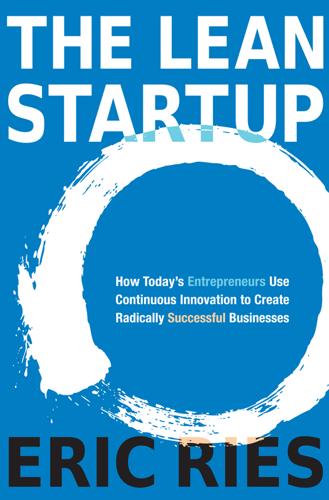
The Lean Startup: How Today’s Entrepreneurs Use Continuous Innovation to Create Radically Successful Businesses
by
Eric Ries
Published 13 Sep 2011
This validation usually would come in the form of a split test showing a change in customer behavior but also might include customer interviews or surveys. The kanban rule permitted only so many stories in each of the four states. As stories flow from one state to the other, the buckets fill up. Once a bucket becomes full, it cannot accept more stories. Only when a story has been validated can it be removed from the kanban board. If the validation fails and it turns out the story is a bad idea, the relevant feature is removed from the product (see the chart on this page). KANBAN DIAGRAM OF WORK AS IT PROGRESSES FROM STAGE TO STAGE (No bucket can contain more than three projects at a time.)
…
Without the discipline of split testing, the company might not have had this realization. In fact, over time, through dozens of tests, it became clear that the key to student engagement was to offer them a combination of social and solo features. Students preferred having a choice of how to study. Kanban Following the lean manufacturing principle of kanban, or capacity constraint, Grockit changed the product prioritization process. Under the new system, user stories were not considered complete until they led to validated learning. Thus, stories could be cataloged as being in one of four states of development: in the product backlog, actively being built, done (feature complete from a technical point of view), or in the process of being validated.
…
KANBAN DIAGRAM OF WORK AS IT PROGRESSES FROM STAGE TO STAGE (No bucket can contain more than three projects at a time.) Work on A begins. D and E are in development. F awaits validation. F is validated. D and E await validation. G, H, I are new tasks to be undertaken. B and C are being built. A completes development. B and C have been built, but under kanban, cannot be moved to the next bucket for validation until A, D, E have been validated. Work cannot begin on H and I until space opens up in the buckets ahead. I have implemented this system with several teams, and the initial result is always frustrating: each bucket fills up, starting with the “validated” bucket and moving on to the “done” bucket, until it’s not possible to start any more work.

An Elegant Puzzle: Systems of Engineering Management
by
Will Larson
Published 19 May 2019
Finishes is particularly important, as opposed to does, because partial work has no value, and your team’s defining constraints are often in the finishing stages. The most effective approach that I’ve found for explaining your team’s delivery process is to build a kanban board2 describing the steps that work goes through, and documenting who performs which steps. You don’t have to switch to using a kanban system, although I’ve found it very effective for debugging team performance, you just have to populate the board once to expose your current constraints. Using this board, you’ll be able to explain what the current constraints are for execution, and help your team narrow suggestions for improvement down to areas that will actually help.
…
Start measuring your team’s health (maybe using short, monthly surveys) and your team’s throughput (do some lightweight form of task sizing, even if you just do it informally with a senior engineer on the team or with yourself), which will allow you to establish the baseline before your change. Then just start running kanban. Don’t publicize it, don’t make a big deal about it, just start doing it with your team. Frame it as a short experiment with the team, and start trying it. Keep iterating on it until you’re confident it works. Have the courage to keep at it for a while, and also the courage to stop doing it if it doesn’t work after a month or two.
…
_encoding=UTF8andbtkr=1 15. https://lethain.com/guiding-broad-change-with-metrics/ 16. https://en.wikipedia.org/wiki/Service-level_objective 17. https://en.wikipedia.org/wiki/OKR 18. https://lethain.com/goals-and-baselines/ 19. https://stripe.com/blog/aws-reserved-instances 20. https://lethain.com/goals-and-baselines/ 21. https://www.amazon.com/dp/B00A5DCALY/ 22. https://lethain.com/productivity-in-the-age-of-hypergrowth/ 23. https://en.wikipedia.org/wiki/You_aren%27t_gonna_need_it 24. https://lethain.com/refactoring-programmatically/ 25. https://en.wikipedia.org/wiki/Lint_(software) 26. https://lethain.com/goals-and-baselines/ 27. https://lethain.com/strategies-visions/ 28. https://lethain.com/strategies-visions/ 29. https://lethain.com/roles-over-rocket-ships/ 30. https://lethain.com/partnering-with-your-manager/ 31. https://lethain.com/digg-v4-architecture-process/ 32. https://www.amazon.com/ALL-NEW-Dont-Think-Elephant/dp/160358594X/ 33. https://en.wikipedia.org/wiki/Kanban 34. https://en.wikipedia.org/wiki/Lint_(software) 35. https://lethain.com/selecting-project-leads/ 36. https://en.wikipedia.org/wiki/Yahoo!_Search_BOSS 37. http://lucene.apache.org/solr/ 38. https://lethain.com/guiding-broad-change-with-metrics/ 39. https://lethain.com/strategies-visions/ 40. https://lethain.com/building-technical-leverage/ 41. https://lethain.com/close-out-solve-or-delegate/ 42. https://lethain.com/organizational-risk/ 43. https://lethain.com/tools-for-operating-a-growing-org/ 44. https://www.amazon.com/dp/B000RO9VJK/ref=dp-kindle-redirect?
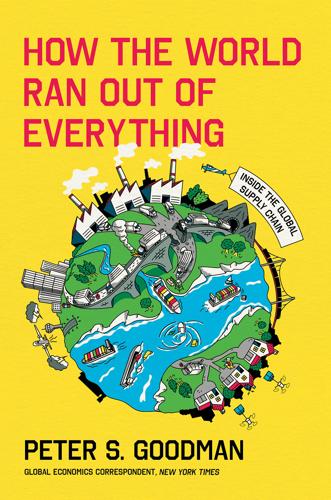
How the World Ran Out of Everything
by
Peter S. Goodman
Published 11 Jun 2024
Ohno’s analysis became the impetus for a tightly controlled system of managing inventory centered on kanban—written manufacturing instructions that accompanied every batch of parts produced within Toyota’s operations. The workstation on the assembly line that installed car doors would take possession of fifty doors pressed by the unit that made them and would hand over kanban that would trigger the production of fifty more. In this fashion, Toyota ensured that it was always making the right volume of parts and finished vehicles—no more, no less. By the 1960s, kanban were in use throughout most of Toyota’s factories. The company soon spread the system to its outside suppliers, sending back empty boxes used to ship parts as an indication to make more.
…
“There’s no supply chain for these things in Mexico,” said Lenovo’s Western operations director, Leandro Sardela, a Brazilian based in Monterrey. Yet even on these items, the chaos of the pandemic years had prompted a foundational change. Lenovo had redirected its historic faith in Just in Time in favor of building up inventory. The company had long been ruled by a kanban-like system inspired by Toyota. It kept on hand only enough parts and raw materials to satisfy its confirmed orders. But the delays in cargo across the Pacific had exposed the risks of going too lean. Lenovo had supplemented three warehouses in Monterrey with two more to ensure it would not suffer future delays because of parts shortages.
…
Penney, 75–76, 86 Jensen, Lars Mikael (Global Ocean Network head), 107 Jensen, Lars (Vespucci Maritime executive), 117 Jiang Xin, 329–30 Jiang Zemin, 29 John Deere, 325 Johnson, Clark A., 35 Johnson, Ron, 76 Johnson, Ryan, 180 Johnson & Johnson, 300 The Jungle (Sinclair), 269 Justice Department, US, 275 Justiniano, Jose and Veronica, 316–18 Just in Time/lean manufacturing model, 39–56, 57–64. See also consultants COVID-19 pandemic and, 39–44 Ford’s manufacturing model as precursor to, 44–50 Just in Time, defined, 50 milk example of, 62 shareholder profit and, 51–56 Toyota and, 42, 56, 57–64, 68, 336, 351 warehousing vs., 14 kanban, 63. See also Just in Time/lean manufacturing model Kansas City Southern, 323 Kennedy, Peter, 223 Kraft, 237, 263 Kroger, 266–67 Kuka Home, 330 Labor Department, US, 256–57 Laredo (Texas), trade importance of, 321–23 Lazzar Uniforms, 317–19 lean manufacturing. See Just in Time/lean manufacturing model “Lean Taliban,” 71.
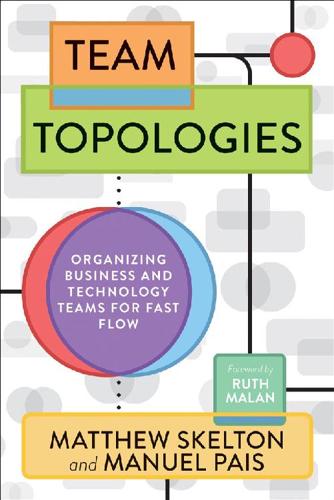
Team Topologies: Organizing Business and Technology Teams for Fast Flow
by
Matthew Skelton
and
Manuel Pais
Published 16 Sep 2019
For example, the bank ING Netherlands explicitly redesigned its office space as part of a major organizational change around 2015 to align teams to value streams.33 At ING, several stream-aligned “squads” working on similar products and services within a stream form a “tribe.” Each tribe has a separate area within the office, including multiple team-sized spaces, one for each squad. The thought-out design of the office layout means that people from other squads or tribes can easily recognize aspects of other teams’ work (such as kanban boards, WIP limits, status radiators, and so on) and rapidly learn new approaches. Some organizations have taken this even further, aligning entire floors of their office space to separate business streams, promoting high flow and easier collaboration within a stream. Jeremy Brown from Red Hat Open Innovation Labs told us how they had everything on wheels (even plants!)
…
Dependencies and Wait Times between Teams To achieve teams that have well-defined responsibilities, can work independently, and are optimized for flow, it is essential to detect and track dependencies and wait times between teams. In Making Work Visible, Dominica DeGrandis recommends the use of a Physical Dependency Matrix or “dependency tags” on kanban cards to identify and track dependencies, and infer the communication needed to make these dependencies work well: “Visualizing important cross-team information helps communicate across teams.”13 In their 2012 paper, “A Taxonomy of Dependencies in Agile Software Development,” Diane Strode and Sid Huff propose three different categories of dependency: knowledge, task, and resource dependencies.14 Such a taxonomy can help pinpoint dependencies between teams and the potential constraints to the flow of work ahead of time.
…
Since 2013, we have had no concept of an IT department within Auto Trader: product and technology are the same department, the same big team. We have taken the Lean thinking approaches of process design and flow into other areas of the organization, so we now have accounts and sales departments using kanban boards with WIP limits. The sales department even does blameless post-incident reviews for missed sales opportunities! Avoid Team Silos in the Flow of Change Generally speaking, teams composed only of people with a single functional expertise should be avoided if we want to deliver software rapidly and safely.
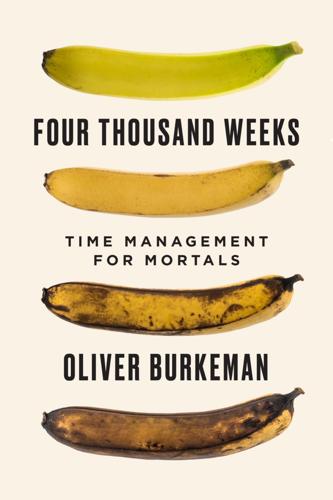
Four Thousand Weeks: Time Management for Mortals
by
Oliver Burkeman
Published 9 Aug 2021
Covey, First Things First (New York: Free Press, 1996), 88. the graphic novelist and creativity coach Jessica Abel: Quotations from Jessica Abel come from “How to Escape Panic Mode and Embrace Your Life-Expanding Projects,” available at jessicaabel.com/pay-yourself-first-life-expanding-projects/. In their book Personal Kanban: Jim Benson and Tonianne DeMaria Barry, Personal Kanban: Mapping Work, Navigating Life (Scotts Valley, CA: CreateSpace, 2011), 39. There is a story attributed to Warren Buffett: The tale of the purported origins of this story, and of Buffett’s comment that he can’t recall anything of the sort, is related in Ruth Umoh, “The Surprising Lesson This 25-Year-Old Learned from Asking Warren Buffett an Embarrassing Question,” CNBC Make It, June 5, 2018, available at www.cnbc.com/2018/06/05/warren-buffetts-answer-to-this-question-taught-alex-banayan-a-lesson.html.
…
Instead, what usually ends up happening is that you make progress on no fronts—because each time a project starts to feel difficult, or frightening, or boring, you can bounce off to a different one instead. You get to preserve your sense of being in control of things, but at the cost of never finishing anything important. The alternative approach is to fix a hard upper limit on the number of things that you allow yourself to work on at any given time. In their book Personal Kanban, which explores this strategy in detail, the management experts Jim Benson and Tonianne DeMaria Barry suggest no more than three items. Once you’ve selected those tasks, all other incoming demands on your time must wait until one of the three items has been completed, thereby freeing up a slot. (It’s also permissible to free up a slot by abandoning a project altogether if it isn’t working out.

The Rise of the Network Society
by
Manuel Castells
Published 31 Aug 1996
Workers’ involvement in the production process is not necessarily reduced to the Japanese model based also on kan-ban and total quality control. These various trends interact with each other, influence each other, but they all are different dimensions of a fundamental process: the process of disintegration of the organizational model of vertical, rational bureaucracies, characteristic of the large corporation under the conditions of standardized mass production and oligopolistic markets.49 The historic timing of these various trends is also different, and the time sequence of their diffusion is extremely important to the understanding of their social and economic meaning. For instance, kan-ban originated in Japan in 1948, and was designed by Ono Taiichi, a former labor union staff member, who became a Toyota manager.50 “Toyotism” was gradually adopted by Japanese automobile firms at an historical moment (the 1960s) when they did not yet represent a competitive threat to the rest of the world.51 “Toyotism” was able to develop by taking advantage of two specific mechanisms historically available to Toyota: its control over labor and its total control over a huge network of suppliers which were external to the firm but internal to the keiretsu.
…
“Toyotism”: management–worker cooperation, multifunctional labor, total quality control, and reduction of uncertainty A third development concerns new methods of management, most of them originating in Japanese firms,20 although in some cases they were experimented with within other contexts, for example in Volvo’s Kalmar complex in Sweden.21 The substantial success in productivity and competitiveness obtained by Japanese automobile firms has been attributed to a large extent to this managerial revolution, so that in the business literature “Toyotism” is opposed to “Fordism” as the new winning formula adapted to the global economy and to the flexible production system.22 The original Japanese model has been widely imitated by other companies, as well as transplanted by Japanese firms to their foreign locations, often leading to a substantial improvement in the performance of these firms vis-à-vis the traditional industrial system.23 Some elements of this model are well known:24 the kan-ban (or “just in time”) system of supplies, by which inventories are eliminated or reduced substantially through delivery from the suppliers to the production site at the exact required time and with the characteristics specified for the production line; “total quality control” of products in the production process, aiming at near-zero defects and best use of resources; workers’ involvement in the production process, by using teamwork, decentralized initiative, greater autonomy of decision on the shopfloor, rewards for team performance, and a flat management hierarchy with few status symbols in the daily life of the firm.
…
For instance, kan-ban originated in Japan in 1948, and was designed by Ono Taiichi, a former labor union staff member, who became a Toyota manager.50 “Toyotism” was gradually adopted by Japanese automobile firms at an historical moment (the 1960s) when they did not yet represent a competitive threat to the rest of the world.51 “Toyotism” was able to develop by taking advantage of two specific mechanisms historically available to Toyota: its control over labor and its total control over a huge network of suppliers which were external to the firm but internal to the keiretsu. When in the 1990s Toyota had to offshore some of its production, it was not always possible to reproduce the kan-ban model (it was not in the symbolic NUMMI plant of Toyota–GM in Fremont, California). Thus “Toyotism” is a transitional model between standardized, mass production and a more efficient work organization characterized by the introduction of craft practices, as well as by workers’ and suppliers’ involvement, in an assembly-line-based, industrial model.
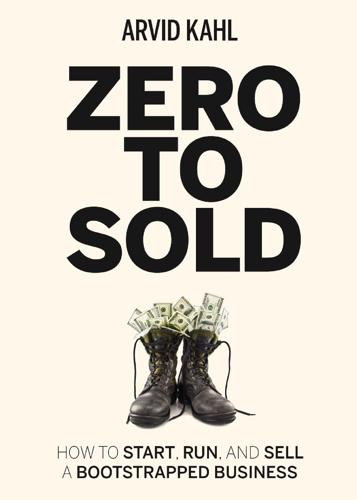
Zero to Sold: How to Start, Run, and Sell a Bootstrapped Business
by
Arvid Kahl
Published 24 Jun 2020
In essence, you can find the most critical minimum-threshold features that you need to supply, the performance features you can start working on early, and the excitement features that will turn your customers into raving fans. Feature Prioritization: Story Mapping Coming from the agile development world, Story Mapping is a way to quickly figure out the order of the steps you need to get a fully working customer workflow implemented from start to finish. You map out the workflow step by step using a Kanban board or Kanban cards, arranging them in order from the start of the customer experience to the stage that yields the final result. Then, order the steps by importance, with the most important on the top, with decreasing importance the further down you get. Finally, create horizontal slices, grouping these steps into releases.
…
Roadmaps without dates: I personally really like these, and it’s best if they come in the form of a Gantt chart. Roadmaps like this show dependencies and connections between tasks more than any discrete date when they should be accomplished. "It's done when it's done, and here is what needs to happen to get there"—what a bootstrapped-compatible sentiment. Kanban-style roadmaps: Unlike the more common timeline-based roadmaps, Kanban-style roadmaps categorize your planned activities and features into groups, like "Backlog," "To Do," "Doing," and "Done." This is a great way of sorting things if you don't want to commit to any particular order but still want to keep an outline of what the future holds.

Meditations for Mortals: Four Weeks to Embrace Your Limitations and Make Time for What Counts
by
Oliver Burkeman
Published 8 Oct 2024
That said, titles on the topic that have genuinely helped trigger action in my own life include Steve Chandler’s Time Warrior and Gregg Krech’s The Art of Taking Action: Lessons from Japanese Psychology. Many of the principles of finitude-embracing productivity are encapsulated in the time management system known as Kanban, which is lucidly outlined in Personal Kanban: Mapping Work/Navigating Life by Jim Benson and Tonianne DeMaria; there are also overlaps with Cal Newport’s advice on dividing your projects into ‘active’ and ‘waiting to be active,’ which is one of the gems in his book Slow Productivity: The Lost Art of Accomplishment Without Burnout.

Brave New Work: Are You Ready to Reinvent Your Organization?
by
Aaron Dignan
Published 1 Feb 2019
Instead, you want a constant flow of cars with enough space around them to keep moving fast. Limiting our work in progress (WIP) increases flow and overall productivity. But how does this work in practice? First, think about how many projects you can reasonably juggle at once. Now cut that number in half. If it’s more than seven, try again. Create a Kanban board with three columns: “To Do,” “Doing,” “Done.” I recommend using Trello, but you can do this on the wall with tape if it suits you. Put everything on your plate in the “To Do” column. Now move the most critical and urgent projects over to the “Doing” column until you’ve reached your newly minted project threshold.
…
That could include cutting off conversational tangents, noticing when some people need to step up or step back, and even pointing out when the leader isn’t playing by the rules. The scribe role captures any actions or outputs created throughout the meeting and leverages any tools or interfaces required by the work. This could include anything from a digital Kanban board to a live document to a task manager. To get started, try electing a facilitator and scribe in each of your recurring meetings. Give them the authority to design and hold the space for meaningful interactions. After ninety days or so, elect new players to fill those roles, until everyone has held that responsibility.
…
“There’s no word for accountability”: Anu Partanen, “What Americans Keep Ignoring About Finland’s School Success,” The Atlantic, December 29, 2011, www.theatlantic.com/national/archive/2011/12/what-americans-keep-ignoring-about-finlands-school-success-250564 [inactive]. “Stop trying to borrow wisdom”: Jason Yip, “Japan Lean Study Mission Day 4: Toyota Home, Norman Bodek, and Takeshi Kawabe,” You’d think with all my video game experience that I’d be more prepared for this: Agile, Lean, Kanban (blog), December 8, 2008, http://jchyip.blogspot.com/2008/12/japan-lean-study-mission-day-4-toyota.html. “Hardly a competent workman”: Frederick Winslow Taylor, “Shop Management,” paper presented at the American Society of Mechanical Engineers meeting in Saratoga, New York, June 1903. “All you have to do is take orders”: Robert Kanigel, The One Best Way: Frederick Winslow Taylor and the Enigma of Efficiency (Cambridge, MA: MIT Press, 2005), 214.

Capitalism Without Capital: The Rise of the Intangible Economy
by
Jonathan Haskel
and
Stian Westlake
Published 7 Nov 2017
The concept of the corporate R&D lab in nineteenth-century Germany, and its development in both Germany and the United States (intangible investments in the process of producing intangible investments), made commercial R&D more systematic and more worthwhile. The invention and development of systems, such as Kanban, the lean manufacturing technique associated with Toyota, increase the return on organizational investment. Code repositories like GitHub and Stack Overflow and the way they are used are a type of social technology—one that increases the return on software investments by helping programmers collaborate.
…
So in the actually existing new economy, not everyone turned out to be a “self-facilitating media node” (as late 1990s knowledge workers were sarcastically described by satirist Charlie Brooker). The intangible economy is as much about Amazon warehouses and the Starbucks operating manual as it is about hipsters in Shoreditch and Williamsburg, or empowered Kanban production workers in Japanese-inspired factories. Perhaps a second way that the new economy has turned out unexpectedly is the emergence of the cult of the manager. Endless management hagiographies adorn airport bookshelves. Managers get invited to Davos. Jack Welch, the former CEO of General Electric, has an institute named after him.
…
See also investment; scalability; spillovers; sunkenness; synergies Intel, 174 intellectual property rights (IPRs), 45, 165, 175–76; clearer rules and norms about, 211–14 Intellectual Ventures, 152 interdisciplinarity, 85 interest rates, 92–93 International Monetary Fund (IMF), 93 Internet of Things, 85, 152 investment: definition of, 19–21; examples of changing nature of, 15–19, 239–40; government, 231–34, 234–36; importance of, 3, 15; in intangibles, 3–5, 21–22, 49–52, 202–6, 239–42; measurement of, 36–43; and secular stagnation, 92–93 investors, choices for, 204–6 IPOs, 171–72 Israeli Statistical Bureau, 56 iTunes, 18 Jacobs, Jane, 138, 142 Jacobs spillovers, 138 Jaeger, Bastian, 141 Jaffe, Adam, 105–6 Jarboe, 54 Jefferson, Thomas, 72 Jobs, Steve, 87, 110 John Deere, 76 Jones, Arthur, 16 Jones, Chad, 62 Joy, Bill, 84 Kaggle, 152 kaizen system, 51 Kanban system, 29, 183 Kantor, Shawn, 224 Kasnik, Ron, 204 Katz, Bruce, 215 Katz, Lawrence, 228 Kaufmann, Eric, 141 Kay, John, 161, 167, 169, 205–6 keiretsu system, 176–77 Keynes, John Maynard, 158, 160, 165, 249n1 Khan, Zorina, 75–76 Kleiner Perkins, 176 K-Mart, 187 knowledge: definition of, 63, 64; embodied versus disembodied, 64–65; propositional versus prescriptive, 64–65; scalability of, 66 knowledge-creating companies, 182–83 Knowledge and the Wealth of Nations (Warsh), 62 labor productivity, 96 land use policies, 214–17 Lazonick, William, 127, 170 Leadbeater, Charles, 4, 182, 183, 196 leadership, 197–99 left-behind communities, 122, 141–42 Lerner, Josh, 62, 178, 220 Lev, Baruch, 41, 43, 62, 185, 201–4, 220 Lewellen, Katharina, 171 Lindqvist, Erik, 131 Litton, 80, 85 Living on Thin Air (Leadbeater), 182 LMUK, 23 London View Management Framework, 216 Longitude Prize, 85 Lucas, Robert, 41 MacArthur Foundation Research Network on Opening Governance, 218 Machlup, Fritz, 38, 43 management: authority of, 189; and building a good organization, 194–97; in an intangible-rich world, 191–93; leadership and, 197–99; monitoring and, 188–91; roles of, 189–90 management consulting, 134–35 Manning, Alan, 123 Marrano, Mauro Giorgio, 42 Marshall, Alfred, 62, 147 Marshall-Arrow-Romer spillovers, 62, 138 Marx, Karl/Marxism, 126–27, 191, 243n3 Masood, Ehsan, 36 Massive Open Online Courses.

Seeking SRE: Conversations About Running Production Systems at Scale
by
David N. Blank-Edelman
Published 16 Sep 2018
Unified backlogs also make it easier to reserve capacity for unplanned work (really another type of “budget”). Kanban is a management methodology that features ideas like unified backlogs and protected capacity. Kanban has been shown to significantly improve the flow of work in organizations with mixed types of work. The writing and presentations of longtime Kanban expert and author Dominica DeGrandis are a good place to start, as she is one of the pioneers in the application of Kanban to operations organizations. Psychological Safety and Human Factors It might now seem like common sense that optimizing the performance of your most important assets, your people, is critical to the success of any technology business.
…
interrupt work, project work vs., We love interrupts and the torrents of information interviewing (job interviews), Interviewing Site Reliability Engineers-Final Thoughts on Interviewing SREsadvice for hiring managers, Advice for Hiring Managers and persons with mental disorders, Interviewing basics, Interviewing 101-The Funnel biases in, Biases funnel basics, The Funnel funnels, SRE Funnels-Final Thoughts on Interviewing SREs industry vs. university candidate profiles, Industry Versus University onsite interview, The Onsite Interview phone screens, Phone Screens selling candidates on your organization, Selling candidates take-home questions, Take-Home Questions walking away from a candidate, Walking away IPython, Installing Python, IPython, and Jupyter Notebook isolationand data durability, Isolation-Operational isolation logical, Logical isolation of failure domains, Isolated failure domains operational, Operational isolation-Operational isolation physical, Physical isolation J Jansson, Mattias, SRE Without SRE, SRE Without SRE: The Spotify Case Study-The Future: Speed at Scale, Safely job application/hiring processas funnel process, The Funnel benefits for applicants with mental disorders, Benefits-Benefits compensation and applicants with mental disorders, Compensation for persons with mental disorders, Interviewing interviewing SREs (see interviewing) onboarding packets, Onboarding job duties, for persons with mental disorders, Job Duties job function, on-call as, Application job postings, Application Joblint, Application Johnston, Bennie, Replies joint cognitive system (JCS), SREs Are Cognitive Agents Working in a Joint Cognitive System, Focus on Making Automation a Team Player in SRE Work Jones, Matt, Replies Jupyter Notebook, Installing Python, IPython, and Jupyter Notebook K Kaizen (continuous improvement), Start by Leaning on Lean-Start by Leaning on Lean Kanban, Unify Backlogs and Protect Capacity Kanwar, Pranay, Replies Kasparov, Garry, From Chess to Go: How Deep Can We Dive? Kata method, Start by Leaning on Lean-Start by Leaning on Lean Kelvin, Lord (William Thomson), From SysAdmin to SRE in 8,963 Words, Where Did SRE Come From? Key Performance Indicators (KPIs), Where Did SRE Come From?

The Year Without Pants: Wordpress.com and the Future of Work
by
Scott Berkun
Published 9 Sep 2013
It's less stressful when its written down. Then put them in order of importance, with an order that everyone understands: what comes first, what comes next, and so on. Making good ordered lists is the fundamental thing any effective leader does, and it's the heart of popular planning methods like Kanban and SCRUM. Over my first few weeks, my list of priorities slowly fell into order. One item kept rising to the top, and many of the other things on the list weren't possible until that one item was successful. My list of priorities looked like this: Trust is everything. Whatever grand vision I had for Team Social was unlikely to get far if Beau, Adams, and Peatling didn't trust me.
…
See Team Social meet-up (Athens, Greece) Humor: as element of Team Social culture; last to arrive at meeting running joke; ouzo running joke; pants running joke; team as Bureau of Socialization; used to nag team members I IBM IDEO Innovation: complicated work process as barrier to; creatives/support balance needed for; level of friction needed for IntenseDebate: acquisition of; description of; evaluating code of; geographic distribution of team members complicating work on; Lebens' work on; mini-team meet-up to increase motivation for; postmortem on; slow progress in work on; two-week investment in improving Internet Explorer Internet relay chat (IRC): Automattic communication via; help when working customer support available via; information known about coworkers when using; patches shared on, before going live; used for meetings J Jabber Jackson, Noël Jacobs, A. J. Jacobs, Jane Jacoby, John Jangda, Mo Jetpack: additional Automatticians working on; concerns about work on; early work on; launched at SXSW; mapping work for; .org connect as origin of; post–New York work on; success of; work on, during New York City meet-up Jobs, Steve K Kafka, Franz Kanban Kelly, Demitrious Key performance indicators (KPIs) Keyet, Isaac Kidder, Tracy Kim, Paul Kofopoulos, Stefanos Koopersmith, Daryl L Launch announcements Launches Leadership: situation as influencing success/failure of; succession planning by Lebens, Beau: about; at Athens meet-up; created Team Social P2; development of leadership skills of; face-to-face chat with, in San Francisco; first-day Skype chat with; handled broken LinkedIn connector problem; at mini-team meet-up in San Francisco; at Portland meet-up; at Seaside company meeting; suggested method for learning from other P2s; as team lead; work on Highlander; work on IntenseDebate; work on Jetpack; work on NASCAR Like Notification feature LinkedIn, broken connector between WordPress.com and Lisbon, Portugal.
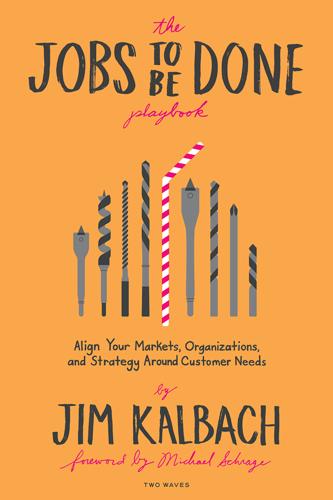
The Jobs to Be Done Playbook: Align Your Markets, Organization, and Strategy Around Customer Needs
by
Jim Kalbach
Published 6 Apr 2020
Use job stories to tie the overall project intent to customer needs, outlined in the next section. Then conceptualize solutions around getting the entire job done or the parts of it determined to be most strategically relevant to your business. After a roadmap is created, you may then need detailed project plans to track progress. A simple Kanban board can serve that purpose in many cases. Or, for more complex software development efforts, tracking software may be needed. In Agile efforts, epic planning and then sprint planning come after you have an overall roadmap. Tying the overall plan to customer needs gives the design and development teams the feeling that they are building something that matters to customers.
…
See cancellation interviews; jobs interviews; Switch interviews Intuit (company), xiii–xiv, xvii, 103 J job-centric messages during onboarding, 174 job comprehension vs. solution experience, 171–174 job maps, 26–28 compared with consumption journey maps, 163 compared with jobs stories, 132 creation of, 74–75 mapping the main job, 72–78, 258 at MURAL, 246 using, 76–78 job performer defining, 42–43 as element of JTBD, 18–21, 32 recruitment for jobs interviews, 49–50 job statements, formulation of, 24–26 jobs defined, 4, 18, 21 as element of JTBD, 18, 21–26, 32 hierarchical levels in JTBD, 33–34 Jobs, Steve, 162, 223–225 Jobs Atlas, 228–231 jobs-based strategy, creating, 201–208, 272 Ansoff matrix, 201–202 BCG growth matrix, 202–203 corporate innovation, 240 growth strategy matrix, 204–208 strategy palette, 203–204 sustaining strategy, 196, 197 jobs-based value proposition, defining, 109–112, 262 Value Proposition Canvas (VPC), 109–112 jobs-driven customer support, 187–188 jobs interviews, conducting, 48–58, 255 data analysis, 55–57 participants, recruitment of, 49–51 preparation, 51 questions, tips, and guidelines, 51–55 recruiting scripts, 49–50 jobs scoring sheet, 91–92 jobs steps, comparing competing solutions, 106–107 jobs stories, aligning teams to, 127–137, 264 compared with job map and roadmap, 132–133 design thinking, 134–136 formats for job stories, 129–132 at MURAL, 249 needs statements, 134–136 and user stories, 127–128, 132 jobs thinking, xv Jobs to Be Done: A Roadmap for Customer-Centered Innovation (Wunker, Wattman, and Farber), 14, 100, 228 Jobs to Be Done: Theory to Practice (Ulwick), 241, 254 journey maps, customer, 163–169, 267 JTBD benefits of, xvi–xvii, 11 defined, 3–5, 14 elements of, 18–32, 44–45 hierarchical levels in, 33–37, 40, 45 objections to, and arguments against them, 242–243 origins of, 3–4, 276 perspectives of, 5–8 principles of, 8–11 scoping the domain, 37–44, 254 JTBD in action aligning product strategy with customer needs, 113–116 bringing to your organization, 241–245 combining Switch interview with concept testing, 79–81 defining product roadmap at MURAL, 246–250 innovation at CarMax, 154–158 methods to apply to innovation efforts, 225–232 for online event organizing, 189–193 recipes for combining techniques, 233–240 K Kalbach, Jim, xv, 78, 189–193, 218, 258, 267 Kamen, Dean, 161 Kanban board, 126 Keuken, Maxim van de, 137, 264 Klement, Alan, 14, 66, 71, 129, 137, 171, 177, 221, 256, 257, 264, 268 Kramer, Mark, 216 Kupillas, Kevin, 69 L laddering, 33, 45 launch of new product or offering, recipe for, 234–235 Lean methods finding unmet needs, 89–90, 233, 234–235 roadmaps, 121 testing hypotheses with JTBD, 151–152 The Lean Product Playbook (Olsen), 89, 234 The Lean Startup (Ries), 151 levels of abstraction in JTBD, 33–37, 40, 45 Levitt, Theodore, 3–4, 224–225 listening, in customer support, 187 little jobs, as level of abstraction in JTBD, 33–34 Loconte, Vito, 113–116 Lombardo, C.
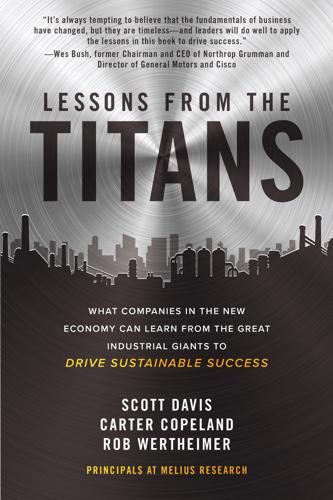
Lessons from the Titans: What Companies in the New Economy Can Learn from the Great Industrial Giants to Drive Sustainable Success
by
Scott Davis
,
Carter Copeland
and
Rob Wertheimer
Published 13 Jul 2020
Everything depends on the organizational push for small improvements every day—not big goals with giant leaps, but small changes that all employees can rally around, with a commitment to measurement and tracking. Doing this correctly and over time is challenging. Even kanban, which is just a factory scheduling system to track workflow and ensure daily management, can be hard to implement at an existing factory. While standard practice in nearly all factories today, back in the 1980s, kanban was rare outside of Japan. Even today it’s often used incorrectly. It requires a healthy level of humility and amazing focus at all levels of an enterprise. That’s why it’s so much harder to perfect than many realize.
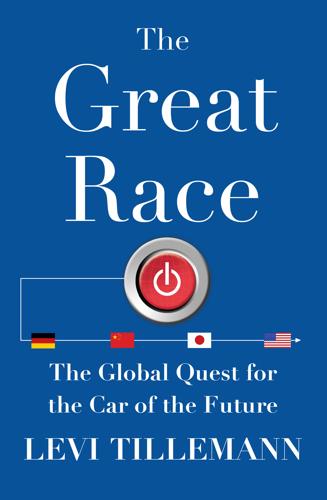
The Great Race: The Global Quest for the Car of the Future
by
Levi Tillemann
Published 20 Jan 2015
They produced parts in small batches to minimize inventory costs, and also to keep tabs on any defect that might have crept into the process. Individually packed boxes filled with just the right number of pieces were assembled for each car—to ensure nothing was omitted. Americans eventually dubbed these techniques “lean production” and the kanban system. Cumulatively, they were called “the Machine That Changed the World.”45 The efficiency of this new “machine” was extraordinary—it was a marked improvement on Ford’s techniques. It gained steam like a freight train and chased down global rivals; for four decades its momentum seemed unstoppable.
…
See Hummer/Humvee Hino, 198 Hinode Motors, 44–45 Hirose, Katsuhiko, 83, 84 Hobbes, Thomas, 254 Honda Motor Company Air Pollution Research Group at, 61 batteries for, 198 BYD and, 232 CARB and, 74, 85–87, 117, 128, 244 and cars in the future, 256 competitors of, 6, 66, 68, 140 computer technology and, 60–61 CVCC system of, 62–64 emissions research at, 59, 61, 62–64, 62n, 66, 86–87, 118, 210 engine technology at, 125, 130 engineering challenges at, 81 Ford Motor and, 68 fuel efficiency at, 118 and global auto industry in the future, 273 GM and, 68 goals of, 58, 62 history of, 57–67 and history of the global auto industry, 26 and internal combustion engine, 62–64, 62n, 81, 117, 256 and Japanese economy, 186 Japanese environmental regulations and, 66 and Japanese industrial policy, 103 “leapfrogging” by, 210 motorcycles and, 57, 58, 60 Nissan and, 66, 140 and nuclear power, 120 and prelude to the Great Race, 44, 56–67 press conference of, 62–63 quality at, 117 racing team of, 60–61 role in Japanese auto industry of, 56, 57–58, 60 sales at, 186 technology and, 117 and TEPCO/Anegawa program, 124, 131 and Tesla Roadster, 147 Toyota and, 66 See also Honda Motor Company—cars of Honda Motor Company—cars of Accord, 232 Civic, 86 EV Plus, 94 EVs, 85–86, 90, 94 hybrids, 117, 118, 124, 126, 127 Insight, 26, 117 1300 sedan, 60 ZEVs, 86–87 Honda, Soichiro, 57–58, 59, 60, 61, 62–63, 66, 67, 87 HSBC, 221 Hu Jintao, 212 Huang Yonghe, 211, 250, 251, 252 Hughes Aircraft, 68–69, 71, 82 Hummer/Humvee (HMMWV), 29–30, 92, 96, 109, 110, 143–44, 151, 250 hybrid vehicles Anegawa’s views about, 119 as automated vehicles, 267–68 “bolt-on,” 205–6 Bush administration and, 110, 111 and CARB mandate, 124 and cars in the future, 256 and Chinese auto industry, 197, 205, 207, 209, 222, 223, 232, 235, 251 expansion of sales of, 116 and history of the global auto industry, 25–26 and Japanese auto industry, 202 Obama’s support for, 170 plug-in, 170, 209, 232, 257 See also specific vehicle or manufacturer hydrocarbons, 39 hydrogen vehicles, 255–57 Hyundai, 244 “i” (Mitsubishi), 135, 201 i3 (BMW), 257 i8 (BMW), 257 Ichimada, Hisato, 51 Ieyasu, Tokugawa, 125 iMiev (Mitsubishi), 131, 134, 139 An Inconvenient Truth (documentary), 141, 150 industrial policy in China, 102–3, 113 environmental issues and, 59 in Japan, 7, 44, 103, 238 of Obama administration, 170, 181 in United States, 7–9, 102–3 Industrial Technology Agency, Japan, 50 infrastructure CARB mandate and, 108 for chargers, 115, 213, 215, 220–24, 225, 226, 262, 263 and Chinese auto industry, 213, 215, 220–24 government role in building, 7 for hydrogen vehicles, 255–56 industrial policy and, 8 and Japan’s EV program, 249n Institute for Transportation Studies, UC Davis, 245 Institute of Energy Economics, Japan, 193 insurance: for automated vehicles, 270 intellectual property: Chinese and, 234–35, 253 internal combustion engine aging of, 75 Bush administration and, 111 and California’s prelude to the Great Race, 24, 33 CARB mandate and, 86, 87, 108 and cars in the future, 256, 258 and changes in Great Race, 6 Chinese auto industry and, 101, 115, 213 elimination of, 24 emissions from, 24 and Ford’s road map for the future, 4–5 fuel cells compared with, 256 GM and, 164–65, 245 and history of the global auto industry, 21, 22, 24, 26 Honda and, 62–64, 62n, 81, 117 Japanese auto industry and, 126 Mitsubishi and, 128, 131 Tillemann’s work on, 3–4 Toyota hybrids and, 83 International Monetary Fund, 208 Interstate Highway System, 7 investors, equity, 6, 173–76, 177, 178, 211–12, 218, 220, 221 IRIS Engines Inc., 4, 5 IRIS (Internally Radiating Impulse Structure) Engine, 3–4 Isle of Man TT, 58 Israel: investors from, 221 Issa, Darrel, 143 Isuzu Motor Company, 48, 50, 51, 128 itai-itai disease, 65–66 Italy: auto production in, 23 Izawa, Ikuo, 189 J1772 battery, 262 Jackson, Lisa P., 172 Japan Abe’s leadership in, 249n ban on foreign autos in, 47–48, 52, 55, 103, 249n batteries/battery swapping in, 202, 221–22, 248, 262 California/CARB relations with, 1, 38, 39–40, 41, 53, 56, 59, 67, 80–81, 107, 118, 128, 153 cars as luxury items in, 50–51 “cash for clunkers” program in, 209 and China’s prelude to the Great Race, 20 Chinese relations with, 197–201, 212, 235 competition and, 6, 47–49, 56, 60, 197–201, 212 and cost/price of cars, 41, 55 Deming’s influence in, 53 designated manufacturers in, 48 domestic auto sales in, 196 earthquakes in, 42, 186–88, 190, 194–95 economy of, 43, 49, 55, 59–60, 65, 158, 186, 247 environmental issues in, 56, 59–60, 64–67, 81, 118, 119, 230, 238, 258 and EV readiness ranking, 201–2 EVs and, 20, 118, 119, 122–24, 125–30, 131–35, 152, 153, 186, 201–3, 212, 238, 246–47, 248, 249n exports to U.S. by, 55, 59, 81 Ford Motor and, 44 and global auto industry in the future, 273 GM and, 44 history of auto industry in, 41–55, 56–67 and history of global auto industry, 23, 26 Honda’s role in, 56, 57–58, 60 image of, 212 industrial policy in, 7, 103, 238 “just in time” method in, 49 Korean War and, 51, 52, 126 labor in, 59, 81 leadership in, 254 mass production/Fordism and, 49, 54 military in, 43, 47, 48–50 and Mizuki incident, 198–99 nuclear power in, 119–22, 123, 126, 127, 193–94, 195–96, 247–48 politics and, 49, 134 post-World War II years in, 7, 49–52, 126 prelude to the Great Race in, 16, 20, 21, 23, 26, 39–40, 41–55, 56–67 protectionism in, 66–67 and quality of cars, 41, 53, 54–55, 98, 117 role in Great Race of, 237–38 state-corporate collaboration in, 238 subsidies in, 43–44, 47, 118, 132, 133, 134, 135, 195, 196, 197, 238 success of auto industry in, 238 technology and, 41, 103, 115–16, 117, 238, 248 Tesla exports to, 243 as threat to U.S. auto industry, 41, 78, 170 and Tillemann’s research about auto industry, 5 U.S. auto exports to, 42–43, 45 and U.S. dominance in auto industry, 2 U.S. imports from, 41 U.S. occupation of, 7, 50–52, 126 U.S. relations with, 2, 44, 47–49 and Wan Gang’s goal, 16 and winning the Great Race, 252, 254 in World War II, 48–49 See also specific person, ministry, manufacturer, or topic Japan Automobile Manufacturers Association, 66 Japan Automobile Research Institute, 127 Japan Oil, Gas and Metals National Corporation (JOGMEC), 200–201 Japanese Environmental Agency, 64 Japanese Statistical Society, 53 Jeep, 23, 96, 250 Jet Propulsion Laboratory, NASA, 72, 234 Jobs, Steve, 242 “just in time” method, 49, 137–38 Kaieda, Banri, 194 Kaishinsha Motors, 43, 46–47. See also Nissan Kan, Naoto, 190, 192 Kanagawa Prefecture (Japan), 132, 133, 136 kanban system (“lean production”), 54–55 Karma (Fisker sports car), 176, 177, 240, 241, 257 Kato, Yasuhiro, 201 Kawasaki, 128 KAZ (Shimiuzu EV), 133 Keio University, 132–33 Kennedy, John F., 248 Keyi Power, 223–24 Kia Motors, 124 Kim-Il-sung, 52 Kishi, Nobusuke, 48, 249n Kleiner, Perkins, Caufield & Byers (KPCB), 173–74, 175, 239 Knight, Ben, 85, 87 knock-down kits, 43, 48 Korea, 103, 215, 260 Korean War, 51–52, 126 Kuzak, Derrick, 4–5 labor, 59, 81, 160–61 Lai Xiaokang, 224–26 Lampe-Onnerud, Christina, 231 lead-acid batteries, 24, 75, 122, 123, 126, 261 leadership: role in Great Race of, 28, 254 “lean combustion,” 62 “lean production” techniques, 54–55 “leapfrogging” in China, 16, 18, 20–21, 98–101, 103, 209–10, 211, 218, 224, 249–50, 251 by Honda, 210 Lehman Brothers, 157, 158 Levandowski, Anthony, 266–68, 269, 272 Lexus, 68, 151, 268 LG Chem, 215 Liao, Frank, 116, 227–28, 229 Libero EV (Mitsubishi), 128 Lishen Battery Joint Stock Corporation (Lishen), 219–20, 230 lithium-ion batteries BYD as China’s largest producer of, 219, 230 CARB mandate and, 93, 95 and cars in the future, 261 and Chinese auto industry, 213, 219–20 and Chinese buses, 206 EV development and, 94 and history of the global auto industry, 25 importance of, 25 Japanese auto industry and, 132–33 Mitsubishi and, 128, 129 Nissan and, 136, 139–40 Subaru and, 139–40 TEPCO/Anegawa program and, 122–23 Tesla and, 147, 243 lithium-silicon batteries, 261 Liu Yan, 206 Lloyd, Alan, 92 Lockheed Aircraft Corporation, 69 Los Angeles Auto Show (1990s), 30, 71, 79 Los Angeles, California: EPA regulations and, 36–37 Los Angeles Pollution Control District, 32, 33 Lutz, Bob, 149–50, 151–52, 161–62, 163, 164 MacArthur, Douglas, 50 MacCready, Paul, 70 “Machine That Changed the World,” 54–55 magnet electric motors, 129, 199 Mahan, Steve, 267–68 Mao Zedong, 96, 99, 113 Marchionne, Sergio, 169, 257 market in Age of Carbon, 5–6 failure of, 10 and future of auto industry, 6–9 and pollution as market defect, 59 and public-private partnership, 6–9 Schumpeter’s comments about, 9–10 Markey, Ed, 172 mass production, 22, 25, 42, 46, 49.
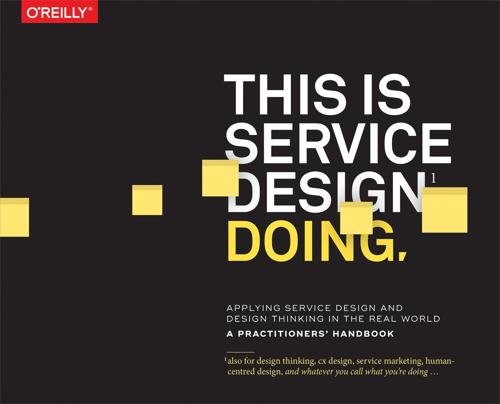
This Is Service Design Doing: Applying Service Design Thinking in the Real World: A Practitioners' Handbook
by
Marc Stickdorn
,
Markus Edgar Hormess
,
Adam Lawrence
and
Jakob Schneider
Published 12 Jan 2018
“Metrics Are Easy; Insight Is Hard,” at https://hbr.org/2012/09/metrics-are-easy-insights-are-hard. 49 Clayton, M. C., & Raynor, M. E. (2003). The Innovator’s Solution: Creating and Sustaining Successful Growth. Harvard Business School Press. 50 User stories are used in many agile software development frameworks, such as Extreme Programming, Scrum, and Kanban. Mind that different approaches often use specific templates for how to phrase user stories. See, for example, Schwaber, K., & Beedle, M. (2002). Agile Software Development with Scrum (Vol. 1). Upper Saddle River: Prentice Hall. 51 Bundesnetzagentur (2015). Monitoring Report, p. 192. 52 Black, C., & Frost, D. (2011).
…
It is actually a form of prototyping; even if it fails it produces valuable results. Build and implement It is essential to have a solid framework for your research, ideation, and prototyping activities when working on any bigger feature (they are usually called “epics”) that is going into implementation. This section ends where most resources on Scrum, Kanban, and so on usually begin: with the product backlog. After finishing research, ideation, and prototyping, the results should be summarized in a requirements document. Together with the engineering team, schedule a planning session to create a list of tasks or stories that need be worked on to fulfill the requirements in the epic.
…
Ideally, no manual work should be required for each new release, except pressing the button. → Ask for feedback as soon as possible: Again, this point can’t be stressed enough. Making the change Giving a common language to teams is the biggest improvement that service design brings to software engineering. Scrum, Kanban, XP, and other methodologies focus on the engineering part while service design helps to answer the questions of what to build and how to prioritize that work. For people accustomed to being on the receiving end of requirements documents, the team approach can be quite uncomfortable. 17 When you are in a facilitator role, try to aim for a slow transition with lots of guidance in the beginning, slowly making the tasks more open and challenging.

Arriving Today: From Factory to Front Door -- Why Everything Has Changed About How and What We Buy
by
Christopher Mims
Published 13 Sep 2021
For people who don’t speak Japanese, the language of kaizen and lean production systems can seem like incantations. Instead of waste, practitioners of lean talk about muda. Instead of continuous improvement, kaizen. When a production line stops automatically because of an irregularity, that’s jidoka. Kanban is the scheduling system unique to lean production. Instead of “management by walking around,” practitioners talk about gemba walks. Amazon even created its own word to define its lean system: ACES, which stands for Amazon Customer Excellence System. Underlying it all is the idea of “just-in-time” manufacturing, which means only ordering what you need when you need it, and making just what’s required at that moment.
…
Hunt, 107 Jackson, Horatio Nelson, 128 “Jake brakes,” 133 Japanese management systems. See management systems Jassy, Andy, 222 Jentoft, Leif, 217–18 jidoka, 227 Jobs, Steve, 284 Johnson, Samaria “Sam,” 180–81 Jones, Doug, 244–46, 249 “just-in-time” manufacturing, 227 Kaczar, Ray, 134–38 kaizen (“lean manufacturing”), 207, 221, 223, 224, 226–32, 239 kanban, 227 Kanigel, Robert, The One Best Way, 94 Kashani, Ali, 265 Kensington (container ship), 55 Keynes, John Maynard, “Economic Possibilities for Our Grandchildren,” 211–12 Kindred (robotics company), 246 kitchens, Lillian Gilbreth’s redesign of, 104–5 Kiva Systems, 248; Amazon warehouses and, 164–69, 173; Bezosism and, 201, 211–14; management systems and, 227–31; robotic warehousing and, 178, 181–83, 191–92 Koch, E.
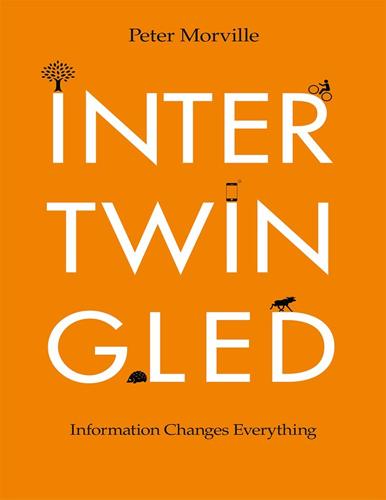
Intertwingled: Information Changes Everything
by
Peter Morville
Published 14 May 2014
And in production, managers learned that by making small batches and giving every worker the ability to stop the line, they could identify, fix, and prevent errors more quickly and effectively. Instead of serving as cogs in the machine, workers were expected to solve problems by using the five why’s to systematically trace every error to its root cause. Similarly, suppliers were expected to coordinate the flow of parts and information within the just-in-time supply system of “kanban.” This transparency ensured everyone knew a missing part could stop the whole system. In short, managers gave workers and suppliers an unprecedented level of information and responsibility, so they could contribute to continuous, incremental improvement. And it worked. Quality soared, and Toyota became the largest, most consistently successful industrial enterprise in the world.
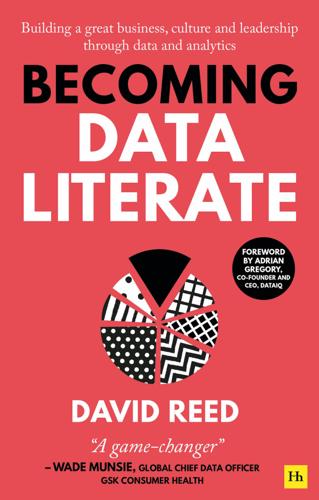
Becoming Data Literate: Building a great business, culture and leadership through data and analytics
by
David Reed
Published 31 Aug 2021
Squads and tribes have emerged as a loose matrix solution that both supports agile analytics and also the socialised, non-hierarchical mindset of younger workers. Originated within Spotify in 2012 as part of its adoption of agile for engineering solutions, the concept has its origins in lean manufacturing and Kanban approaches to continuous improvement. It is a specifically people management tool for organising practitioners and helping them to maintain a sense of ownership, identity and belonging, which can be hard to achieve given the rapid turnover of projects within agile working. For any data department, the creation of communities of practice, guilds, squads and tribes should be a fundamental part of its operating model.
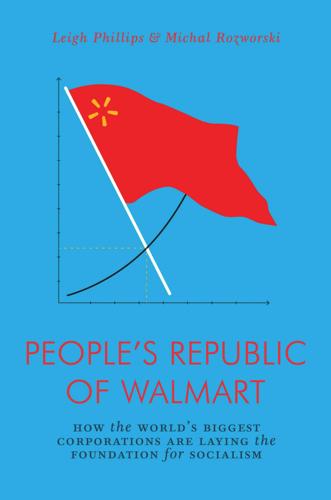
The People's Republic of Walmart: How the World's Biggest Corporations Are Laying the Foundation for Socialism
by
Leigh Phillips
and
Michal Rozworski
Published 5 Mar 2019
But they never told manufacturing, and so seeing the boost in sales, manufacturing thought there had been an increase in demand for green cars and cranked up production of the very thing that sales had been trying to offload. The same phenomenon occurs in retail as much as it does manufacturing (and manufacturing is merely another link within the retail supply chain anyway), with Toyota being one of the first firms to implement intra- and inter-firm information visibility through its Walmart-like “Kanban” system, although the origin of this strategy dates as far back as the 1940s. While Walmart was pivotal in development of supply chain management, there are few large companies that have not copied its practices via some form of cross–supply chain visibility and planning, extending the planning that happens within a firm very widely throughout the capitalist “marketplace.”
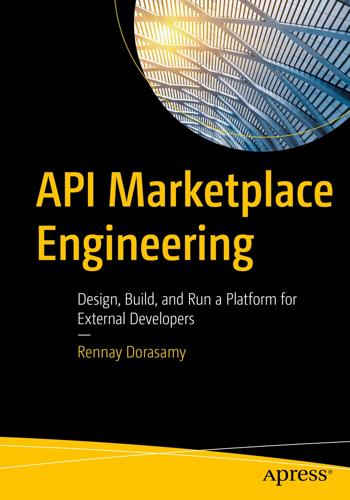
API Marketplace Engineering: Design, Build, and Run a Platform for External Developers
by
Rennay Dorasamy
Published 2 Dec 2021
Delivery Approach Our Marketplace came into existence at a time when the organization had made a conscious decision to shift to a more agile delivery approach. A new Way of Work was quickly established, and it was not uncommon to find business units which had previously operated along more traditional lines huddled around a Kanban board for the morning standup. Our delivery philosophy has always been based on Agile principles, and we have adapted and tailored our approach over time to meet unique requirements. The initial strategy for the Marketplace was more tactical. The primary objective of the team was simply to launch an API Marketplace with the hope that third-party providers would come.

Lab Rats: How Silicon Valley Made Work Miserable for the Rest of Us
by
Dan Lyons
Published 22 Oct 2018
When your training is complete, you’ll start each day with a “stand-up meeting” and work in a “scrum” with a “Scrum Master,” and you’ll pick tasks from a “backlog” of “story points.” You’ll work in “sprints,” and at the end of each sprint you’ll do a “demo,” and a “retrospective,” and then you’ll start a fresh sprint. Instead of a scrum, you might have a “kanban,” which is more or less the same thing, or you might have a “scrumban,” which combines the two—and I am not just making that up. The groups must coordinate with each other, so in each morning meeting the team will nominate an “ambassador,” and that poor bastard will have to attend a second meeting, called a “Scrum of Scrums,” which keeps the scrums humming.

The Manager’s Path
by
Camille Fournier
Published 7 Mar 2017
Each role has benefits and drawbacks, and it’s up to you to feel out what you enjoy the most. TECH LEAD | 45 Good Manager, Bad Manager: The Process Czar The process czar believes that there is one true process that, if implemented correctly and followed as designed, will solve all of the team’s biggest problems. Process czars may be obsessed with agile, Kanban, scrum, lean, or even waterfall methods. They may have a very precise idea of how on-call should work, how code reviews must be done, or how the release process has to operate. They tend to be very organized and comfortable with details, and they’re good at knowing the rules and following them precisely.
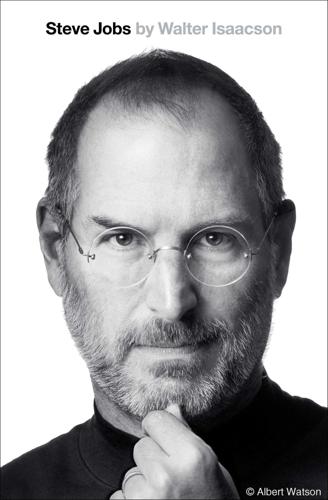
Steve Jobs
by
Walter Isaacson
Published 23 Oct 2011
He insisted that the machinery on the 165-foot assembly line be configured to move the circuit boards from right to left as they got built, so that the process would look better to visitors who watched from the viewing gallery. Empty circuit boards were fed in at one end and twenty minutes later, untouched by humans, came out the other end as completed boards. The process followed the Japanese principle known as kanban, in which each machine performs its task only when the next machine is ready to receive another part. Jobs had not tempered his way of dealing with employees. “He applied charm or public humiliation in a way that in most cases proved to be pretty effective,” Tribble recalled. But sometimes it wasn’t.
…
Crew, 321 Jefferson, Thomas, 171 Jefferson Airplane, 57, 280, 413 Jetsons, The (TV show), 351–52, 445 Jobs, Clara Hagopian, xiv, 1, 5, 8, 9, 11–12, 50–51, 68 background of, 2 death of, 253–54 SJ adopted by, 3 SJ’s money gift to, 106 Jobs, Erin, xiv, 280, 283, 425, 509, 539, 559 SJ’s relationship with, 540–42 Jobs, Eve, xiv, 283, 452, 497, 509, 539, 553, 554, 559 SJ’s relationship with, 542–43 Jobs, Patty, xiv, 5, 67, 255 Jobs, Paul Reinhold, xiv 5–6, 14, 15, 22, 50–51, 68, 125, 228, 253, 254, 274, 294, 556 background of, 1–2 career of, 6–9 in Macintosh factory tour, 183–84 SJ adopted by, xxxiv, 3 SJ’s money gift to, 106 SJ’s relationship with, 6, 8, 11–12, 18–19 Jobs, Reed Paul, xiv 258, 282–83, 315, 415, 477, 484, 509, 521, 526, 527, 536, 541, 542, 546, 550–51, 559, 569 SJ’s relationship with, 538–40 Jobs, Steven Paul, 21, 56, 108, 148, 293, 305, 340, 358, 490, 560 achievements of, xx–xxi, 565–66 adoption trauma and, 4–5, 12, 50–51 AppleLabs proposal and, 196–98, 203–6 Apple-NeXT lawsuits and, 217–18, 221–22 assessment of, 565–67 attitude toward wealth of, 104–6, 448–49, 451 author’s sickbed visit with, 555–57 aversion to authority of, 12, 19, 83 bachelor’s party of, 273–74 birth mother found by, 253–55, 258 Blue Box partnership and, 29–30 business drive of, 54–55 calligraphy studied by, 40–41, 130 cancer of, xviii–xix, 266, 376, 415, 425, 452–56, 461, 476, 479–80, 482–84, 538–39, 547–51, 555 carbon microphone incident and, 10–11 as celebrity, 180–81 chairman role of, 207–9, 213, 225 charisma of, 31, 64, 112, 121, 172, 242, 245, 302, 564 childhood of, 5–12, 119 as college dropout, 40–41 commune living and, 38–39 controlling personality of, 74–75, 137–38, 182–83, 236, 245, 287, 288, 309, 315, 335–36, 365, 493 counterculture self-image of, 107, 162–63, 168, 331, 451 design aesthetic of, 80, 125–28, 239–40, 248 design passion of, 220–21 diet of, 14, 31, 35–36, 41, 51, 68, 82–83, 260, 454–55, 476–77, 548–49 Eastern spirituality interest of, 34–35, 48–52 education of, 12–20 electronics passion of, 10–11, 15–17, 19–20 fame of, 106–7 fasting practice of, 36, 476, 548 final resignation letter of, 557–59 first car of, 18 first computer seen by, 8 first desktop computer seen by, 17 first experience with electronics, 6–7 first girlfriend of, 31 first work experience of, 17–18 40th birthday party of, 283 50th birthday party of, 457–58 hallucinogenic drugs used by, 31–32, 35 health issues of, 333–34, 452–53, 456, 476 hygiene of, 82–83 illegitimate child of, 88–90, 256 India sojourn of, 46–48, 570 intensity of, xviii, 38, 172, 223, 561, 564 legacy of, 306, 534–35, 567–70 liver transplant of, 482–84, 489 low pass filter of, 120–21 LSD used by, 10, 41, 384 management focus mantra of, 359 marijuana used by, 18–19, 32 marriage of, 272–74 in middle school, 13–14 mood swings of, 157, 195, 223, 548 music passion of, 19, 25–26 Narcissistic Personality Disorder ascribed to, 265–66 offensive behavior of, 5, 32, 43, 56, 64, 91, 101, 118, 119, 121–23, 124, 142, 146, 157, 166, 178, 195–96, 198, 223, 225, 461–62, 489, 565 Palo Alto home of, 274–77, 278 patents of, 375 perfectionism of, 74, 183, 315, 513, 561, 566 philanthropy and, 105–6, 423–24, 543 as prankster, 12–13, 16, 26 in primal scream therapy, 50 product launches and, 165–67 reality distortion field of, see reality distortion field religion and, 14–15 resignation letters of, 215–16, 217, 557–59 Russia visit of, 209–10 selections on iPod of, 412–14 sense of abandonment of, 4–5, 12, 50–51 social awkwardness of, 13–14 stare of, 38, 106, 172, 191, 193, 201, 203, 206, 303 stock options matter and, 364–66, 448–50, 477 30th birthday celebration of, 188–90 Time profiles of, 106–7, 139–41 topography obsession of, 130–31 20th wedding anniversary of, 529–30 vegetarianism of, 35–36, 82, 96, 155, 185, 260, 312, 454 in White House visit, 192–93 whole-widget approach of, 137–38 worldview of, 119–20, 230, 315–16, 561 Wozniak’s remote device episode and, 193–94 yacht planned by, 528–29 Zen Buddhism interest of, 15, 34–36, 41, 48–50, 128, 262, 564, 570 Johnson, Ron, xiv 369–73, 377, 536 Jones, Carr, 275 Jones, Jeff, 524 Joplin, Janis, 57, 413 Joy, Bill, 236 Juan Carlos I, King of Spain, 228 Jump Back (Rolling Stones), 412 Jung, Andrea, 321, 481 Junod, Tom, 478 Justice Department, U.S., 323 Kac, Mark, 566 Kahney, Leander, 138 Kahng, Stephen “King,” 336 kanban (manufacturing principle), 225 Kapor, Mitch, 159, 188–89, 224 Kare, Susan, 131–32, 144, 152, 221, 232–33 Karen O, 500 Katzenberg, Jeffrey, xiv 248, 284–87, 288, 292, 436 ants movies rivalry and, 427–30 Kawasaki, Guy, 298 Kay, Alan, 95, 238, 474–75 Kazaa, 394, 402 Keenan, Joe, 72 Kehoe, Louise, 304, 309 Kennedy, Bobby, 331 Kenyon, Larry, 123 Kepler, Johannes, 561 Kerwin, Pam, 241–42, 244–46, 431 Kesey, Ken, 57, 58 Keys, Alicia, 413 KGB, 209 Kincaid, Bill, 383 Kindle, 503, 534 King, B.
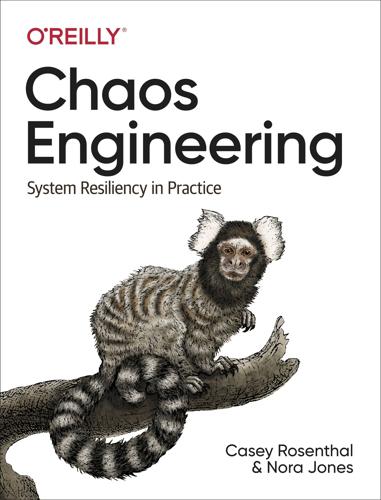
Chaos Engineering: System Resiliency in Practice
by
Casey Rosenthal
and
Nora Jones
Published 27 Apr 2020
It doesn’t take much to send you into the world of cascades, leader elections, split brains, or data loss. Network latency failures have an analog in our human-distributed system, the organization. We create all of these reliable systems to keep track of work, like ticketing systems, asynchronous chat rooms, and frameworks like Lean, Scrum, or Kanban. These systems are designed to work well when communication is consistent and fast. They start to fall apart when it’s less frequent. Generally this is when communication starts to cross boundaries, like teams or departments. The effectiveness of the structures and frameworks are based on short feedback loops between people.

The Secret Life of Groceries: The Dark Miracle of the American Supermarket
by
Benjamin Lorr
Published 14 Jun 2020
Just-in-time demanded a simultaneously tighter yet more flexible coupling of the pieces of the supply chain, emphasizing communication over conformity. It relied on cooperative problem-solving with suppliers to ensure they shipped only what was needed when it was needed. And it applied a relentless, obsessive scrutiny to all forms of waste. It would evolve from physical adjustments to the manufacturing process—like red kanban cards handed backward at each stage of production—to the electronic flags and integrated robotics of today. In the process, it made Toyota the most profitable automaker in the world; its net margins grew to be over eight times higher than the industry average. These practices made their way to retail slowly, even as their eventual application was impossible to resist.

The Nature of Software Development: Keep It Simple, Make It Valuable, Build It Piece by Piece
by
Ron Jeffries
Published 14 Aug 2015
Is there just one or are there several? Will a machine have NICs on different networks with different jobs? Do machines have long-lasting identities? Are machines automatically set up and torn down? If so, how do we manage the images for them? Finding or building the answer to these questions never appears on a Kanban board or a Jira ticket, but they’re essential to making a smooth transition to operations. Given a stable foundation to build upon, we need to look at how individual machine instances in that environment will behave and how we will control them. We’ll look at those issues in the next chapter. Footnotes [19] https://sourceforge.net/projects/bonnie64 [20] https://12factor.net Copyright © 2018, The Pragmatic Bookshelf.
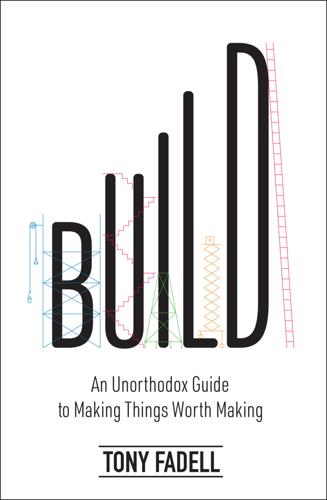
Build: An Unorthodox Guide to Making Things Worth Making
by
Tony Fadell
Published 2 May 2022
This might happen every few weeks or every few months, but it has to happen in order to keep everyone moving in lockstep to the external announcement. And in order to keep the project heartbeat going, every team will need to produce its own deliverables at its own pace. Each team’s heartbeat will be different—it could be six-week sprints or weekly reviews or daily check-ins. It could be scrum or waterfall or kanban, whatever organizational framework or project management approach works for you. A creative team is going to have a very different heartbeat than an engineering team; a company that makes hardware is going to have slower team rhythms than companies that only push around electrons. It doesn’t matter what that heartbeat is, your job is to keep it steady so your team knows what’s expected of them.
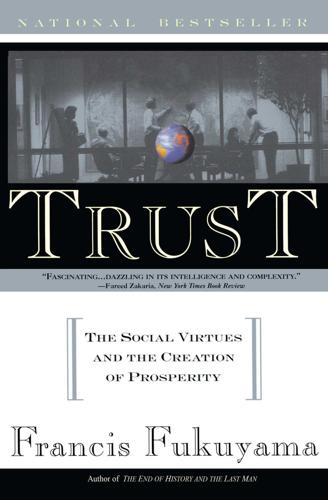
Trust: The Social Virtue and the Creation of Prosperity
by
Francis Fukuyama
Published 1 Jan 1995
Not only do these areas not have unions and a tradition of union militancy, but they are home to relatively homogeneous communities that hark back in spirit to the small-town America of the early twentieth century. To understand the revolution in social relations on the factory floor that has been taking place in the United States, we need to understand the nature of lean manufacturing itself. Lean manufacturing (otherwise known as just-in-time, or kanban in Japanese), perfected by the Toyota Motor Corporation, has been an industrial buzzword for a decade and a half now, and the practice has diffused from Japan to North America, Europe, and some parts of the Third World. It has been studied extensively, particularly by the MIT International Motor Vehicle Program, on whose work I will rely heavily here.9 The fact that it has been implemented in so many different countries suggests to the authors of the MIT study that it is not a culturally determined practice but rather a management technique of universal applicability.